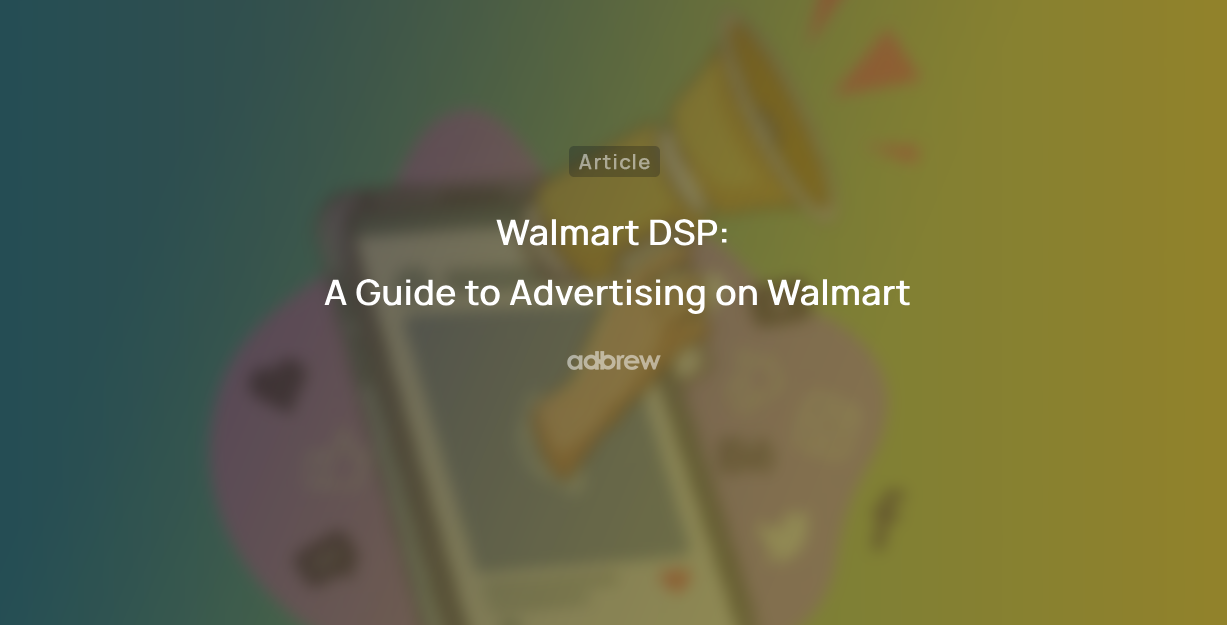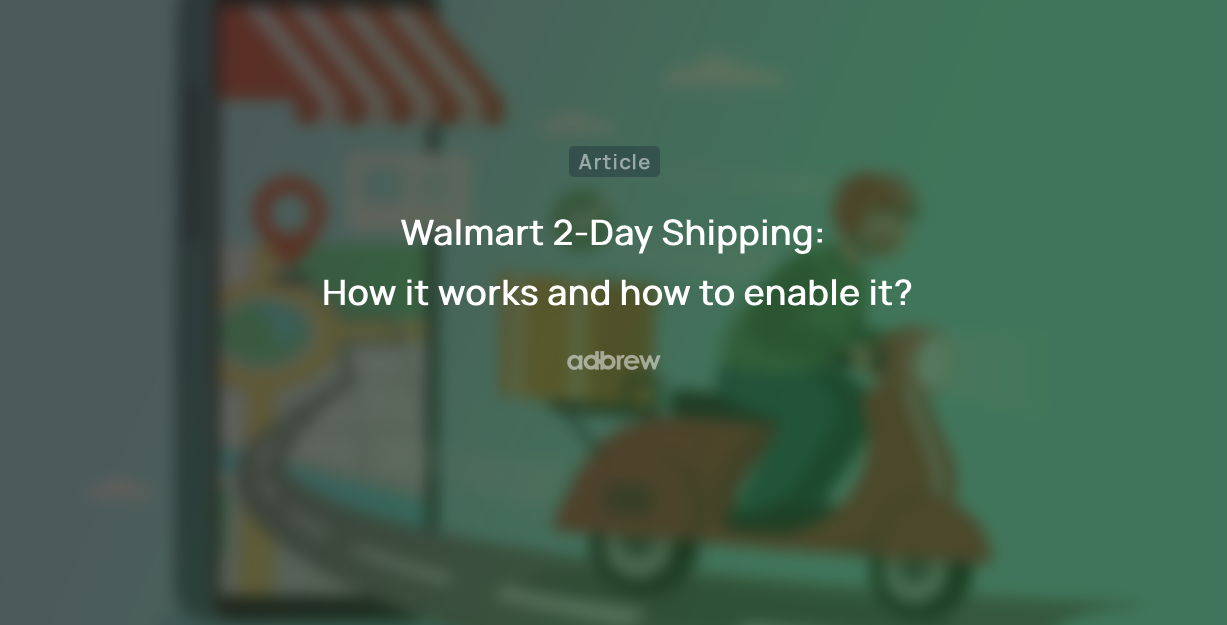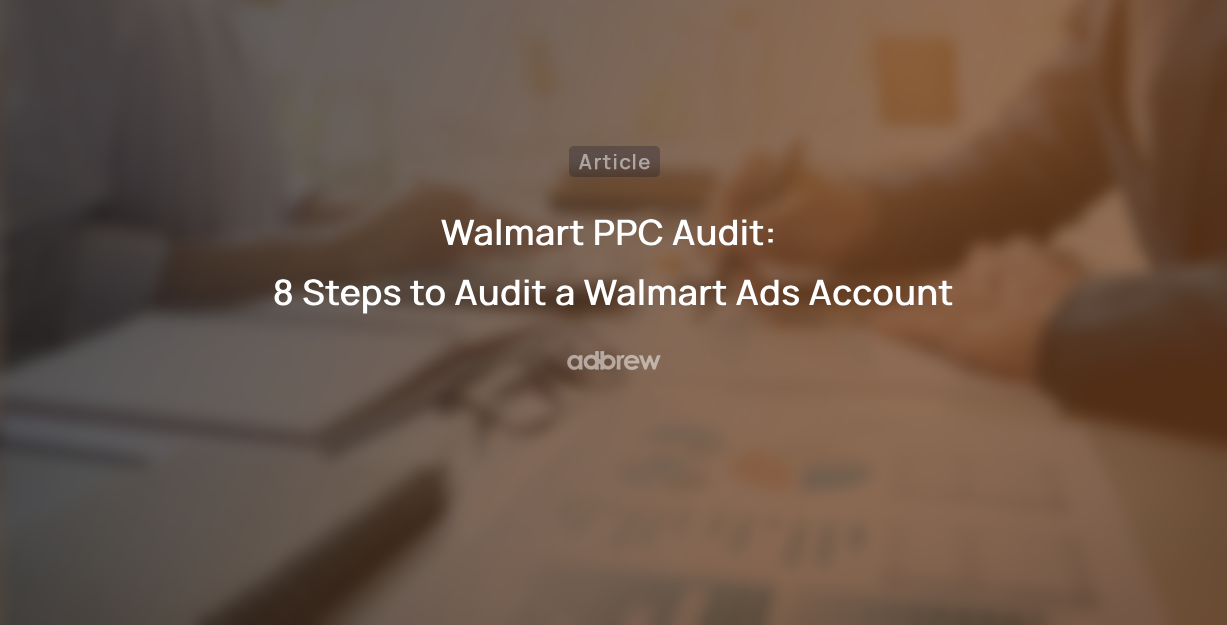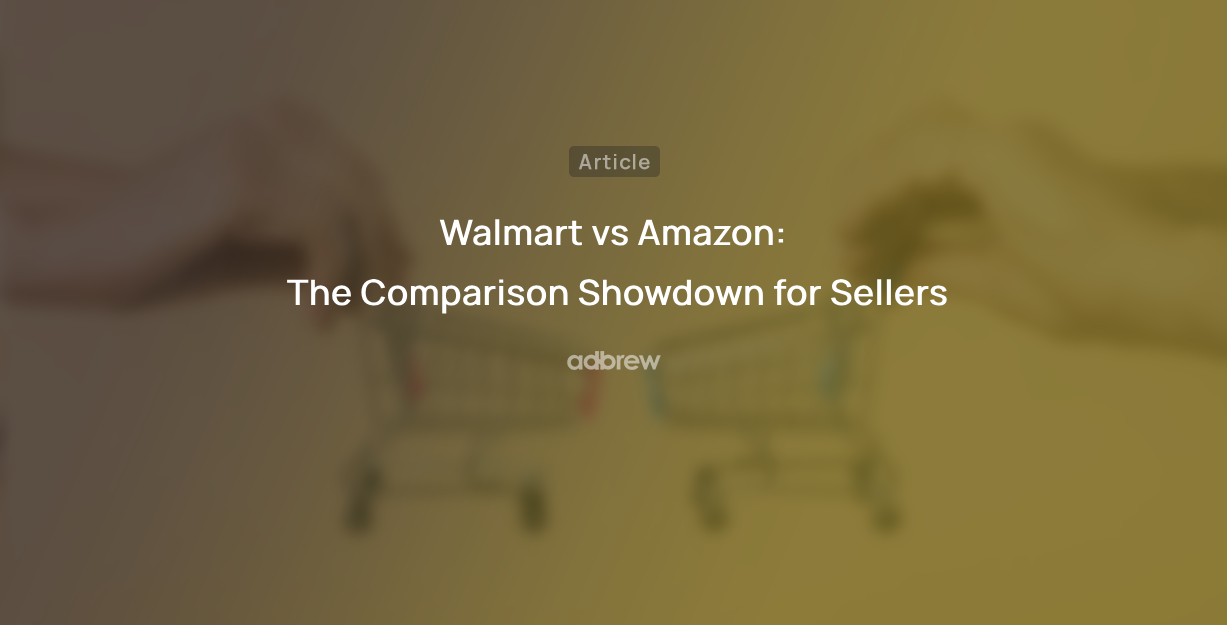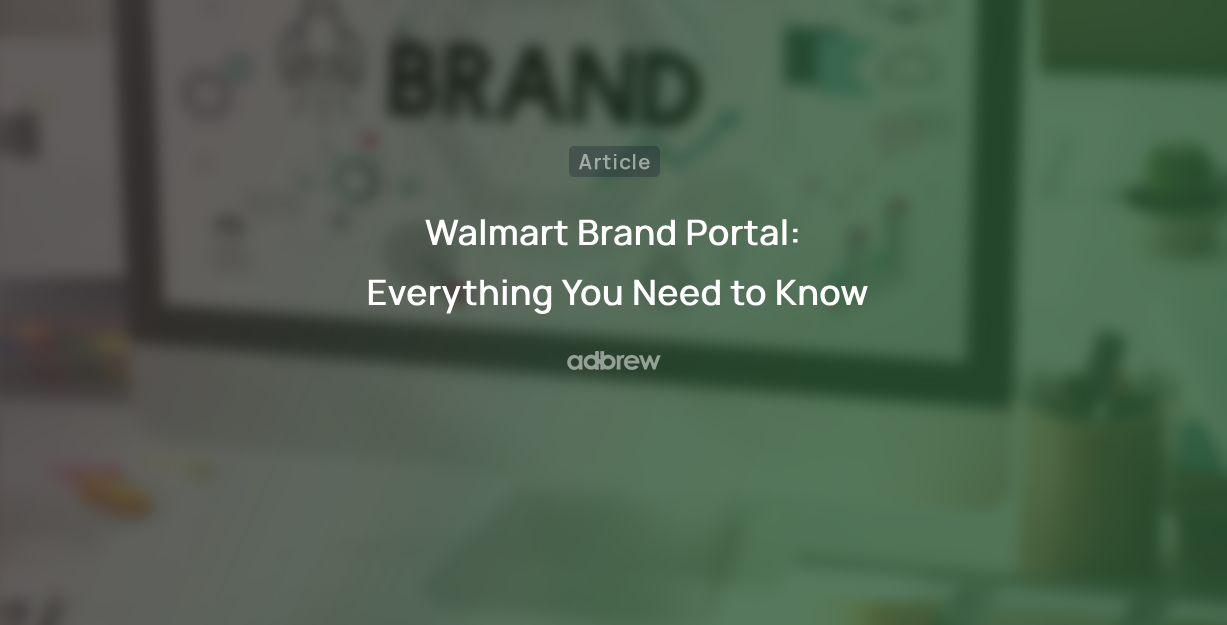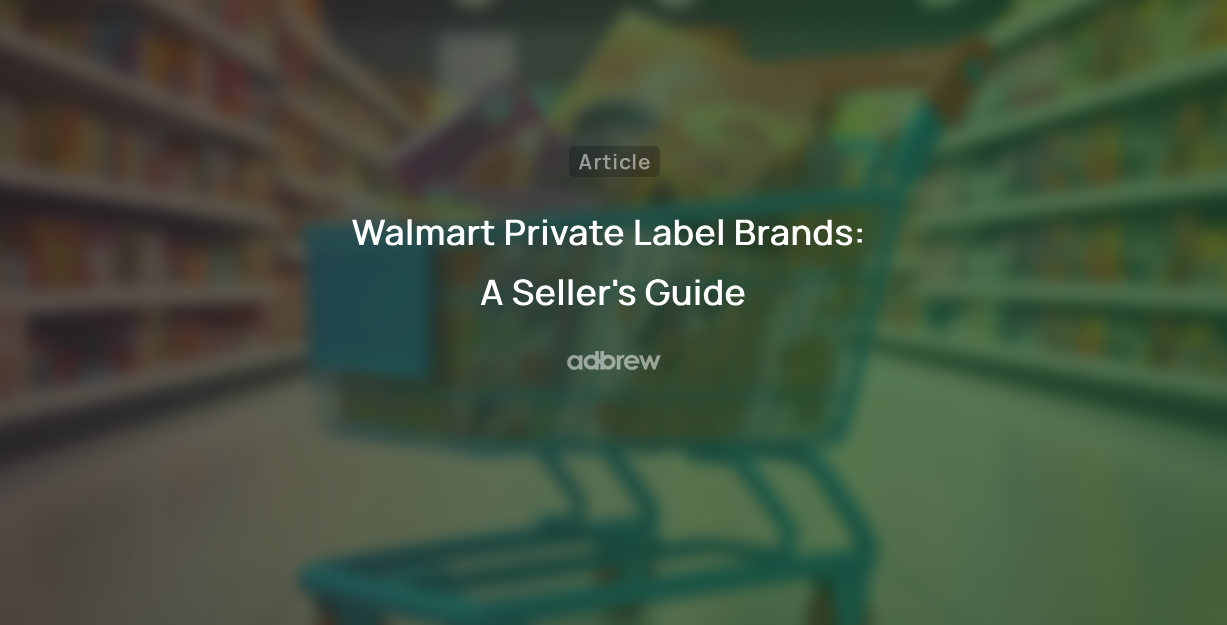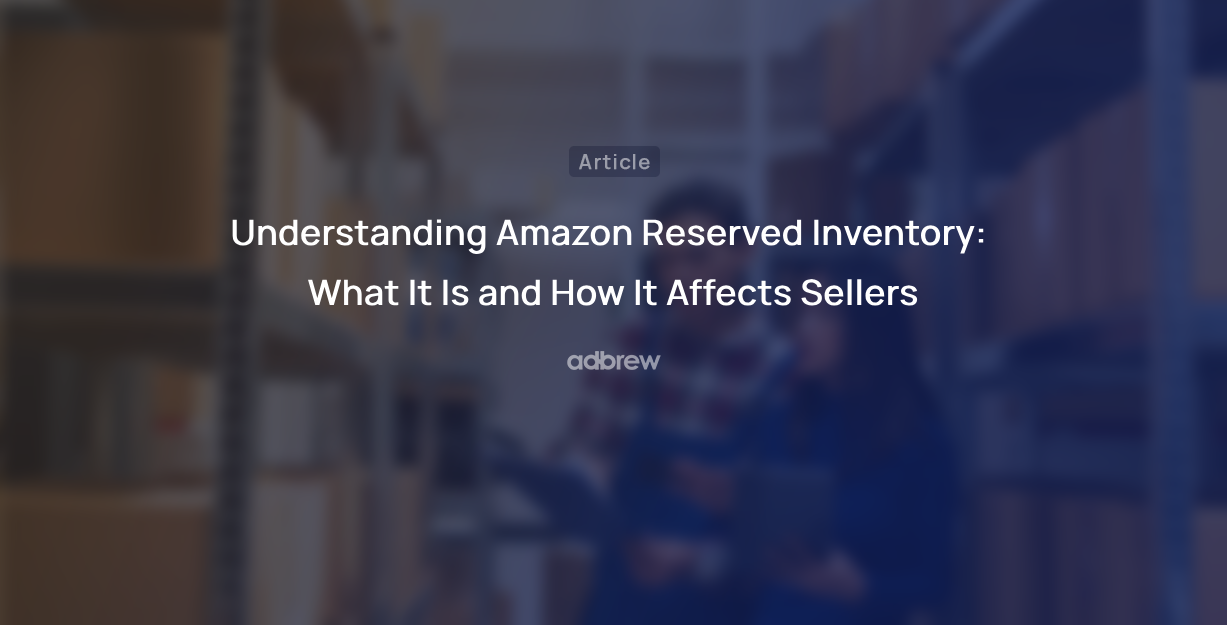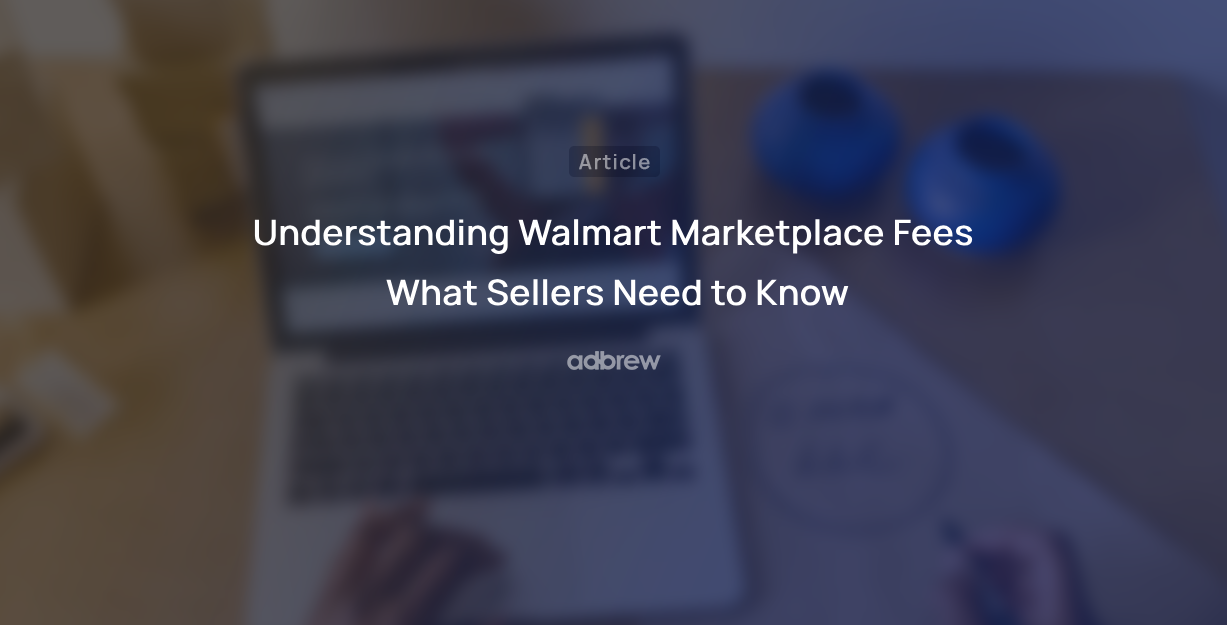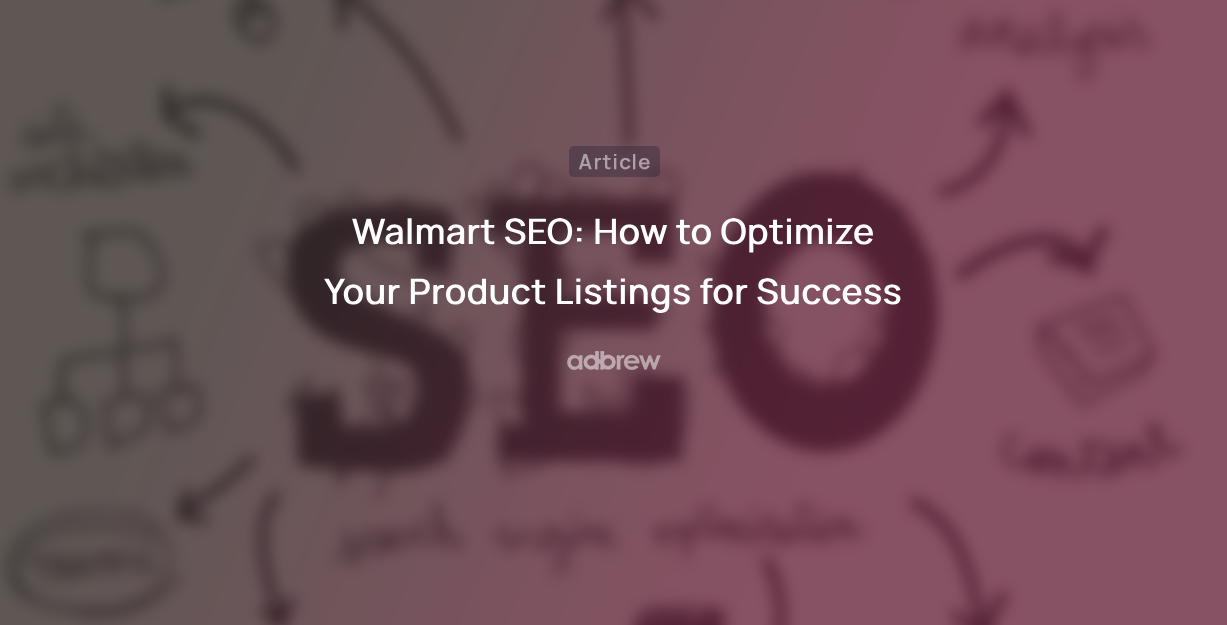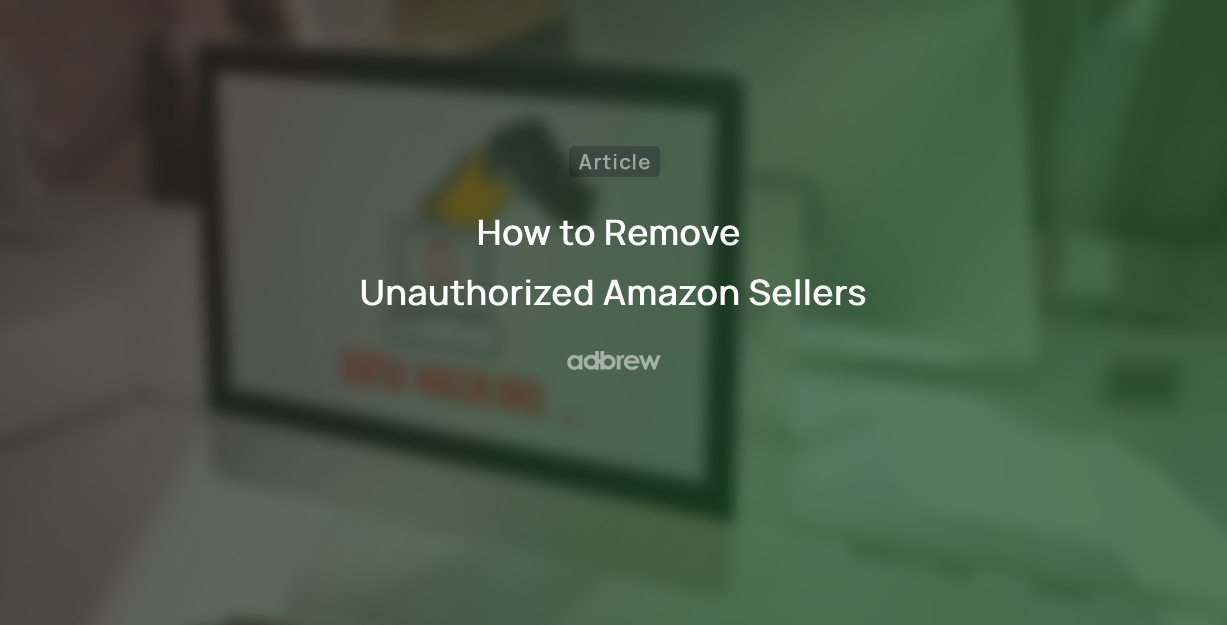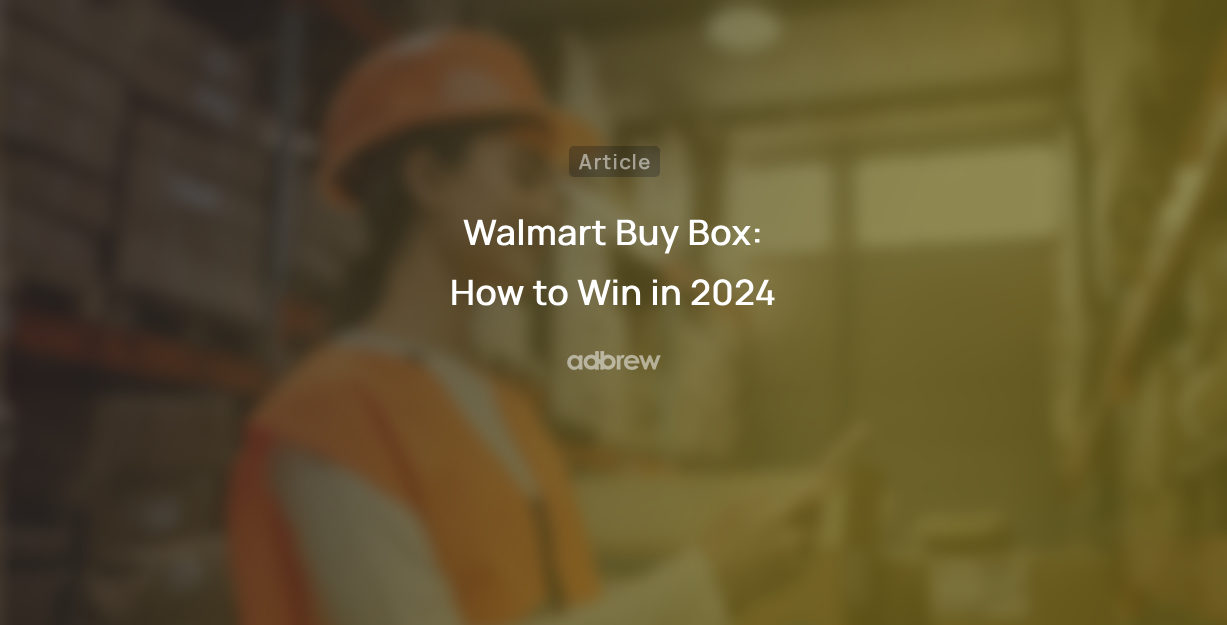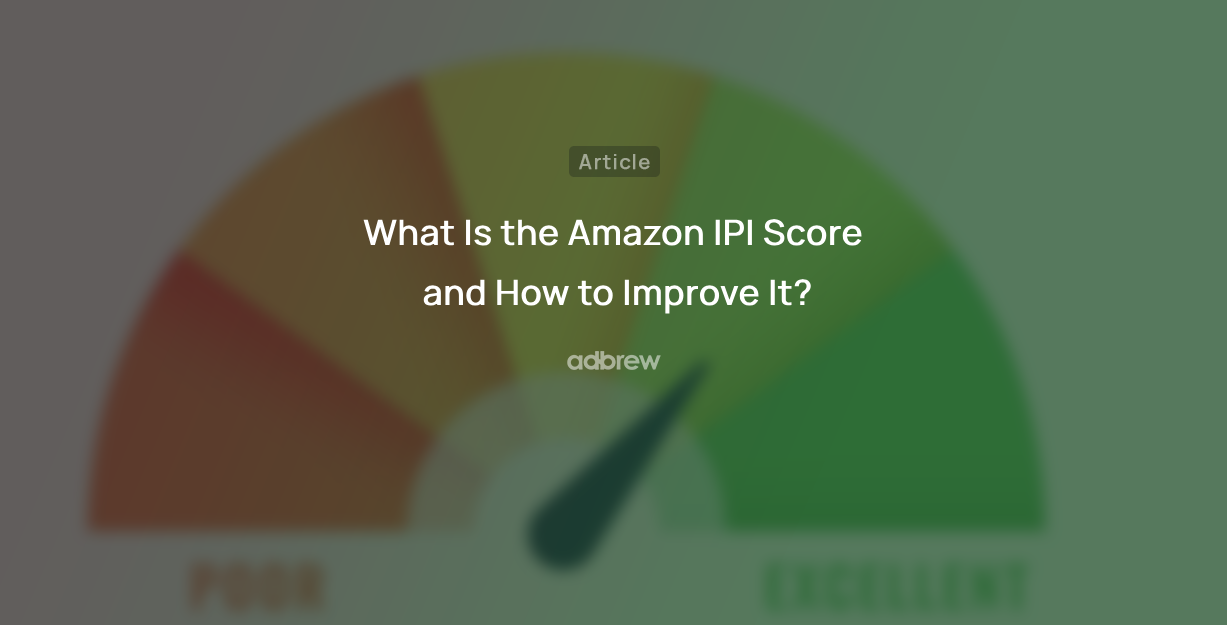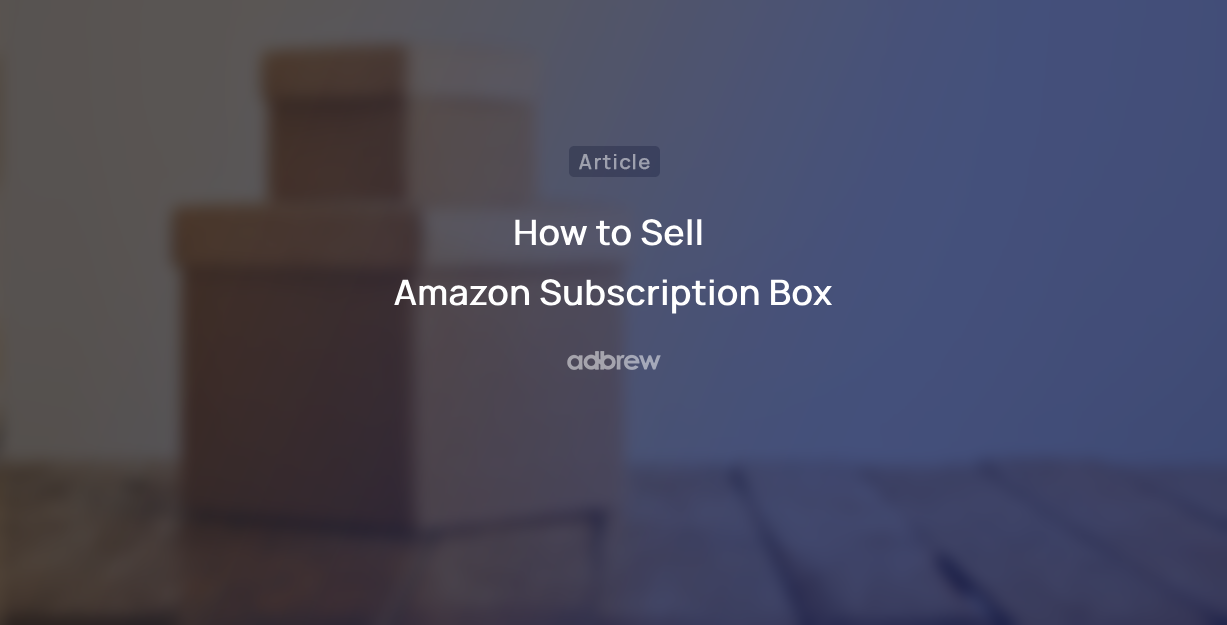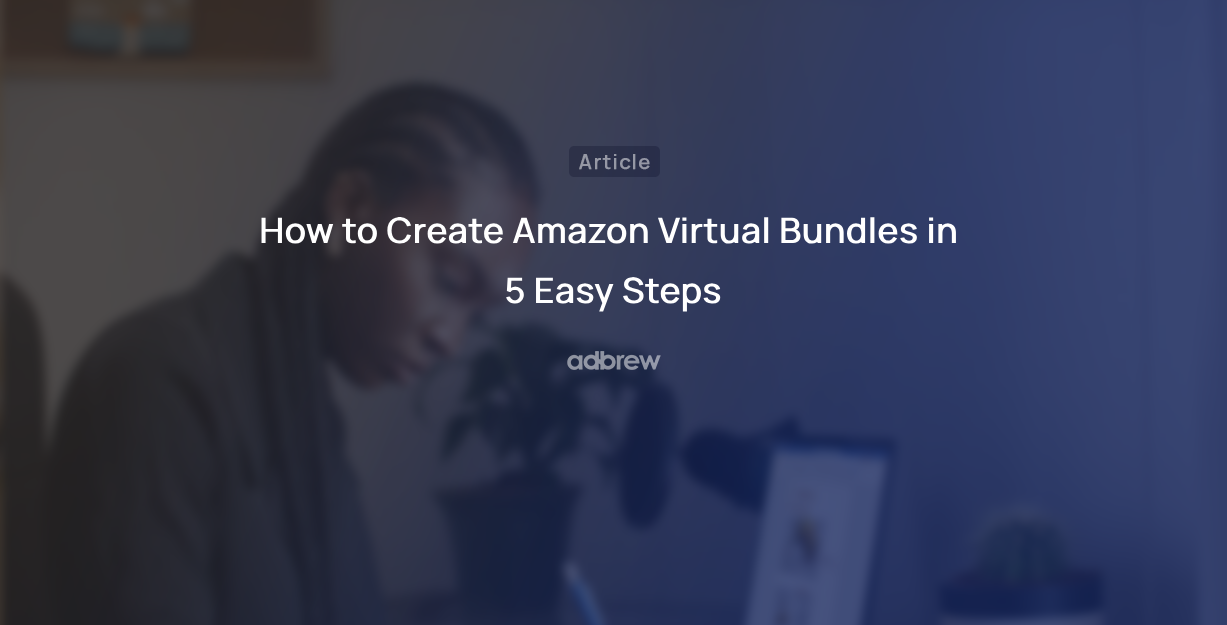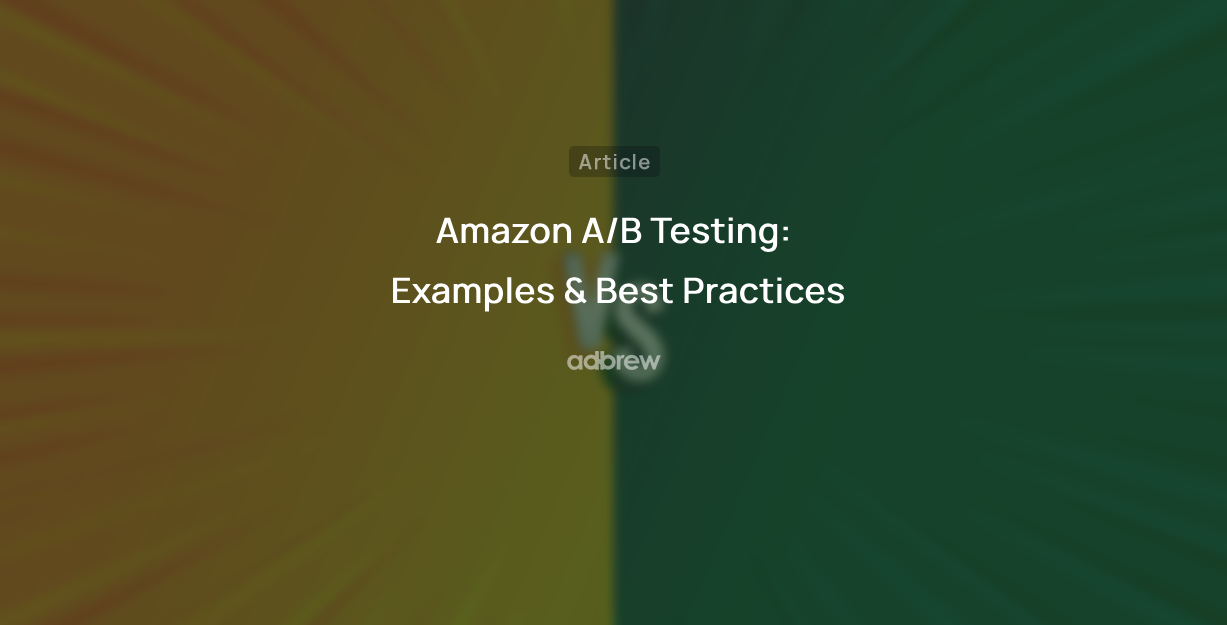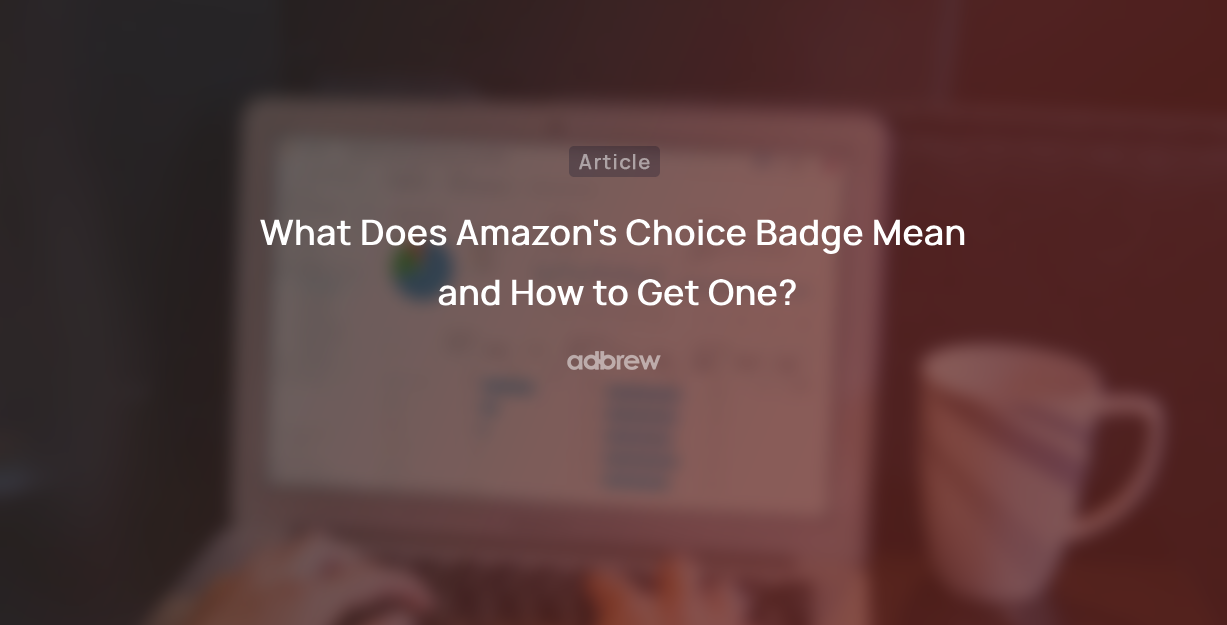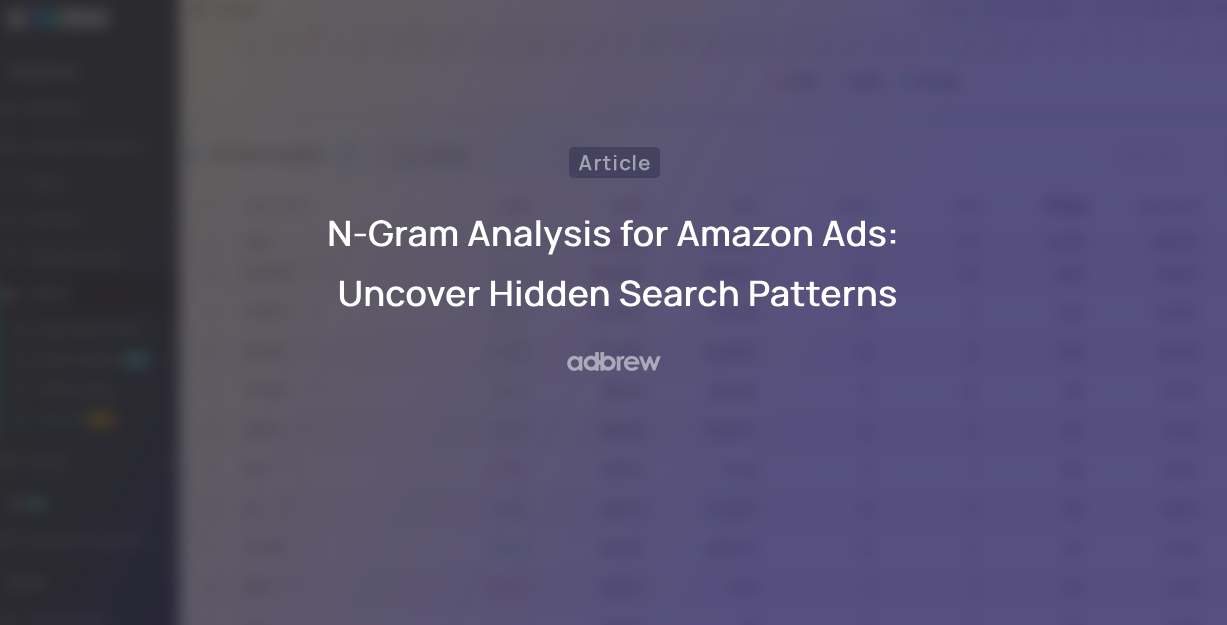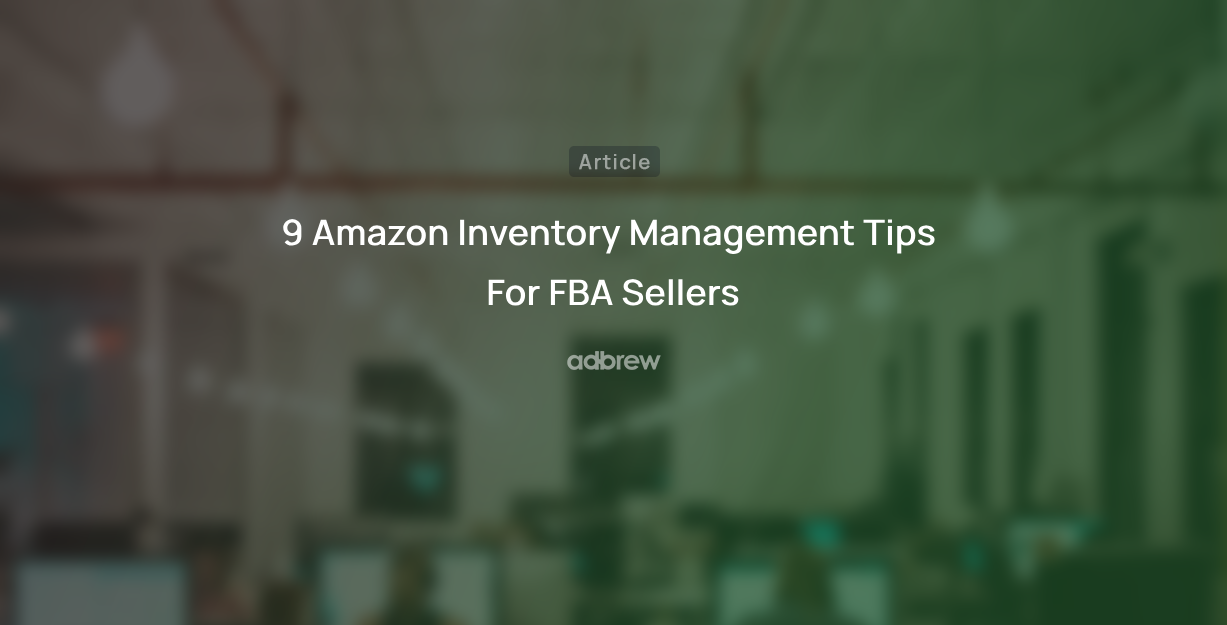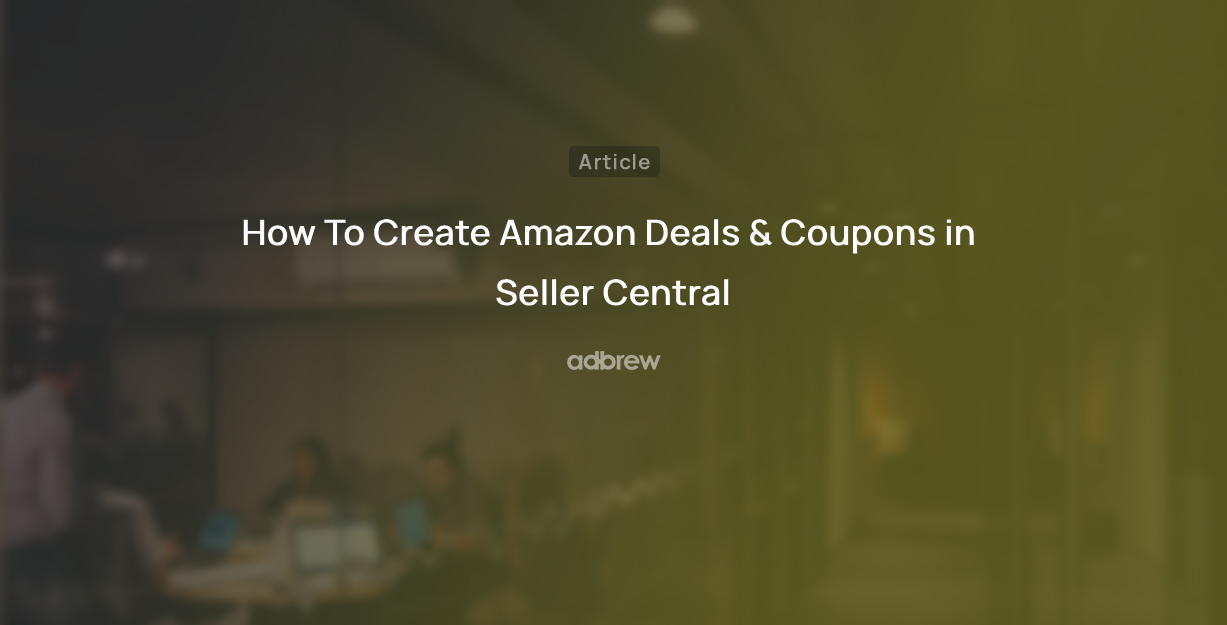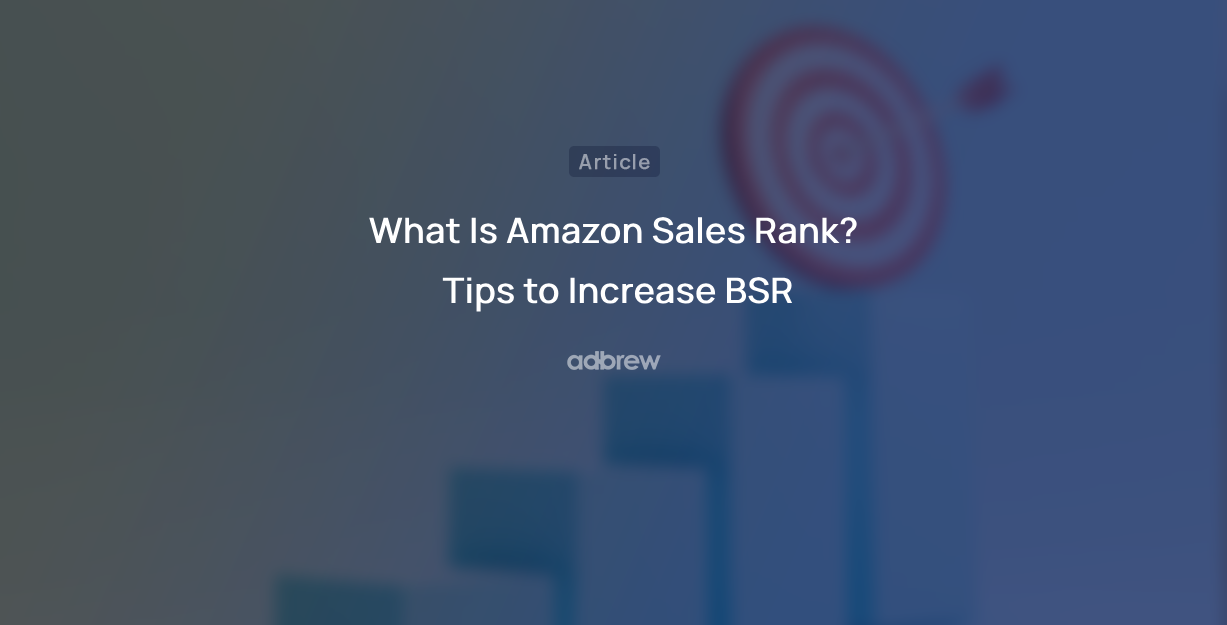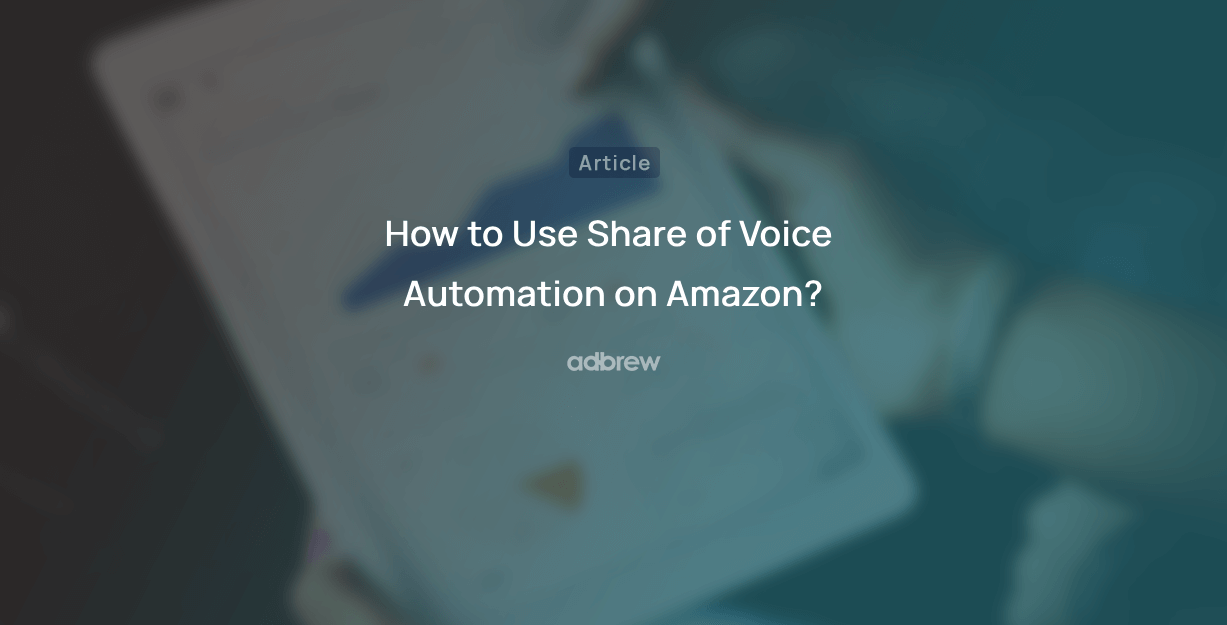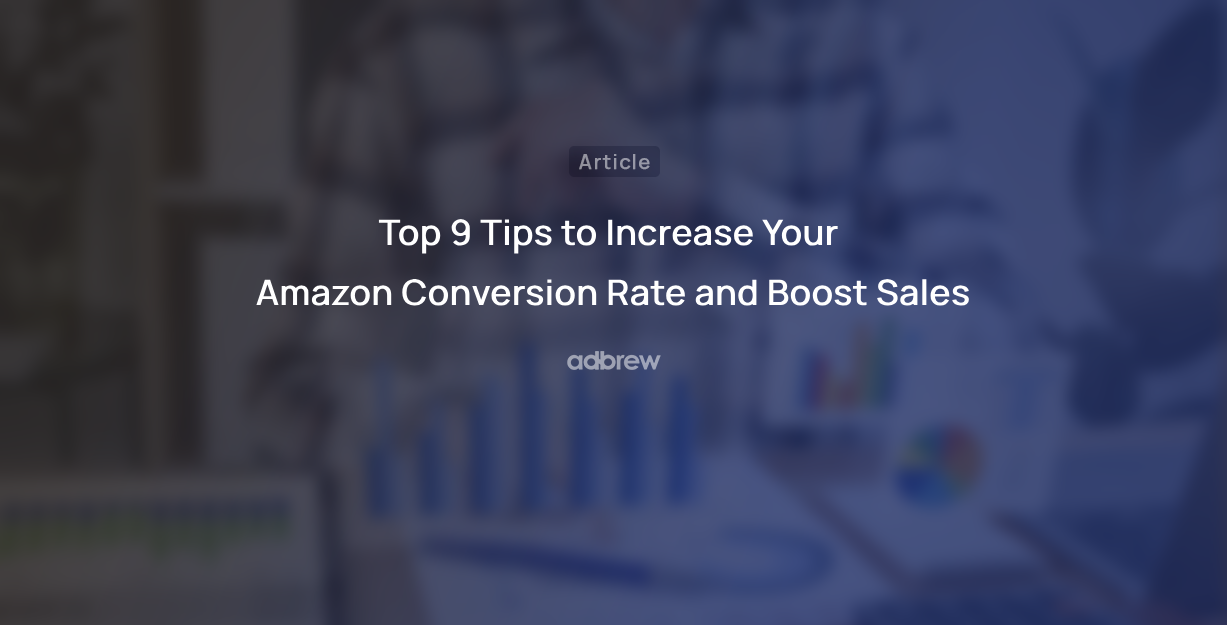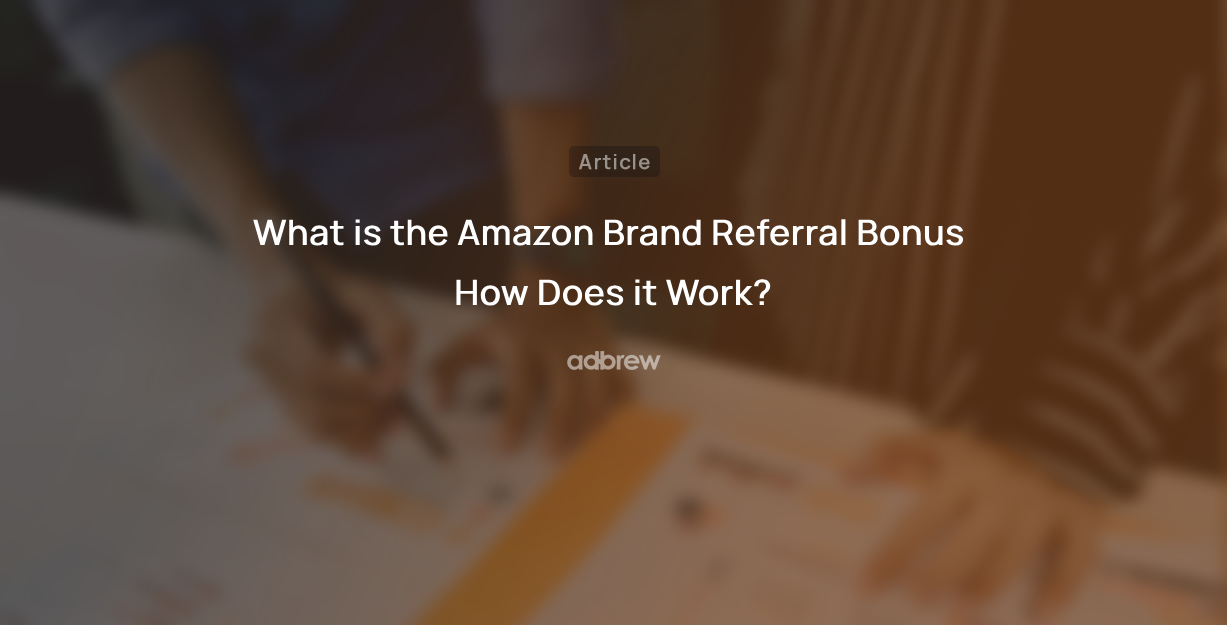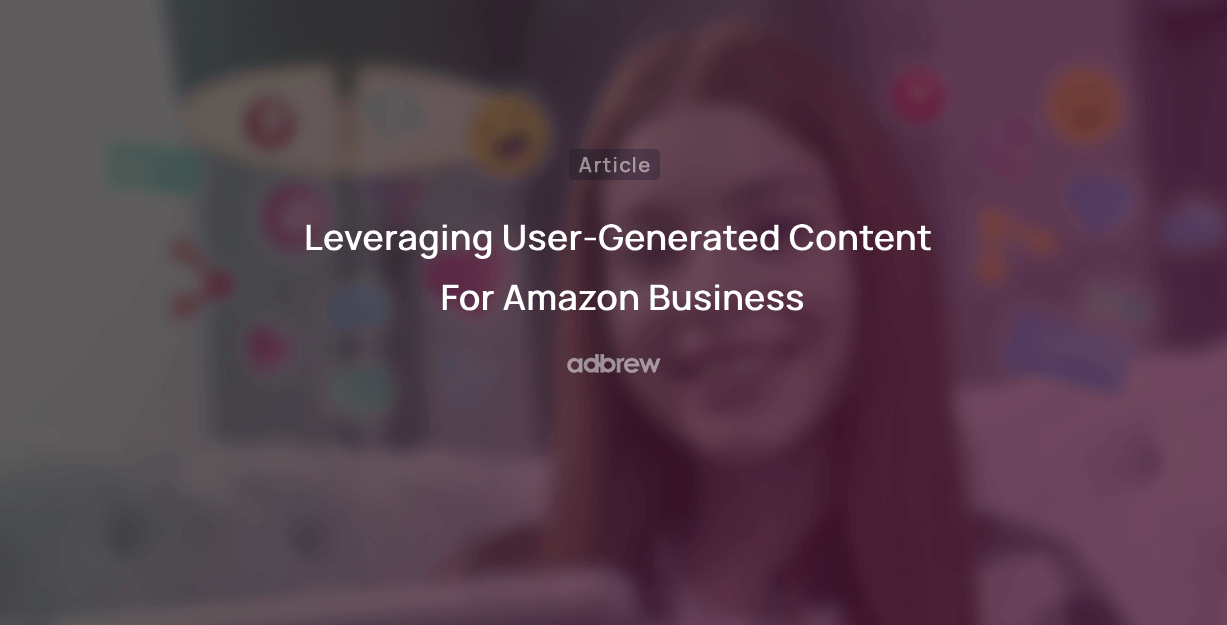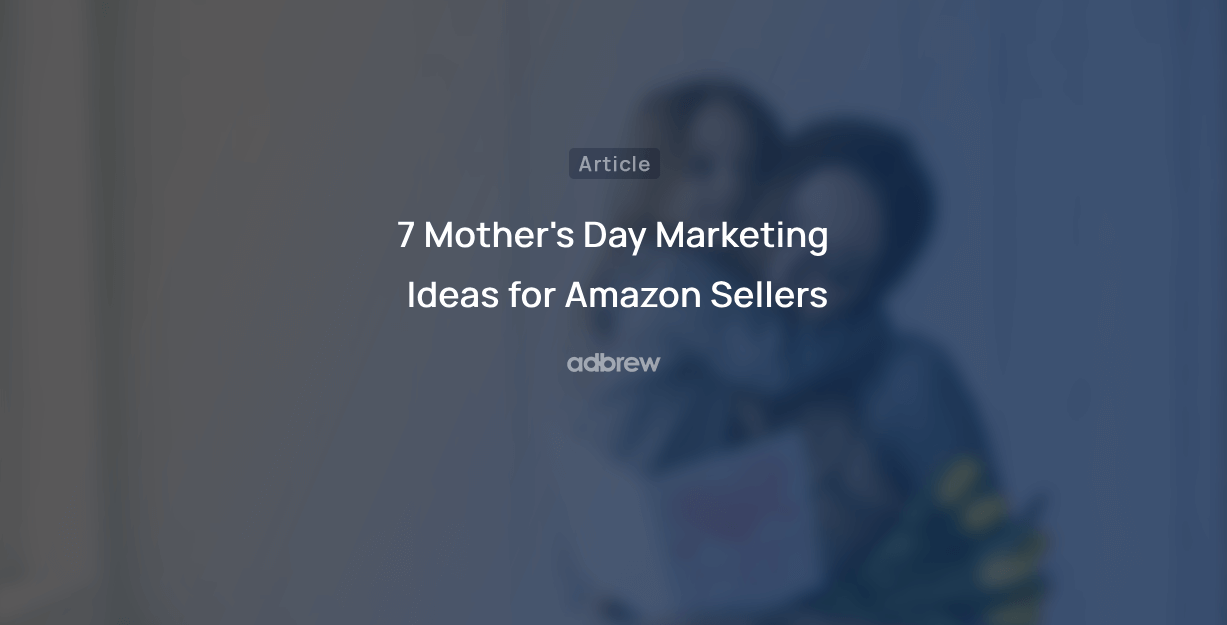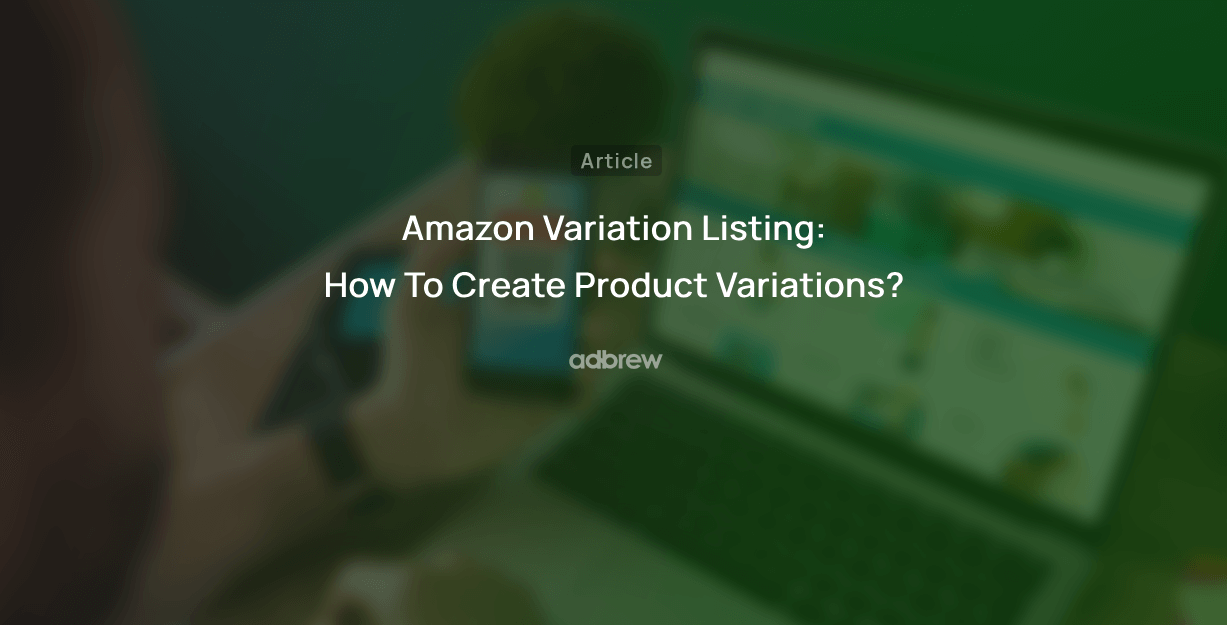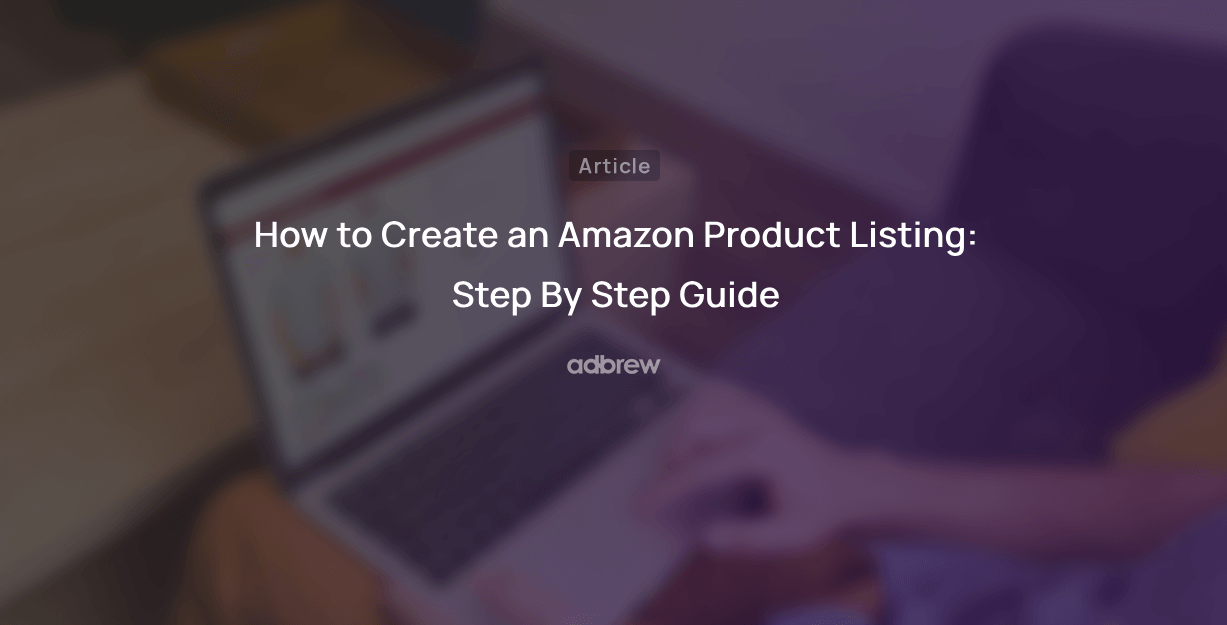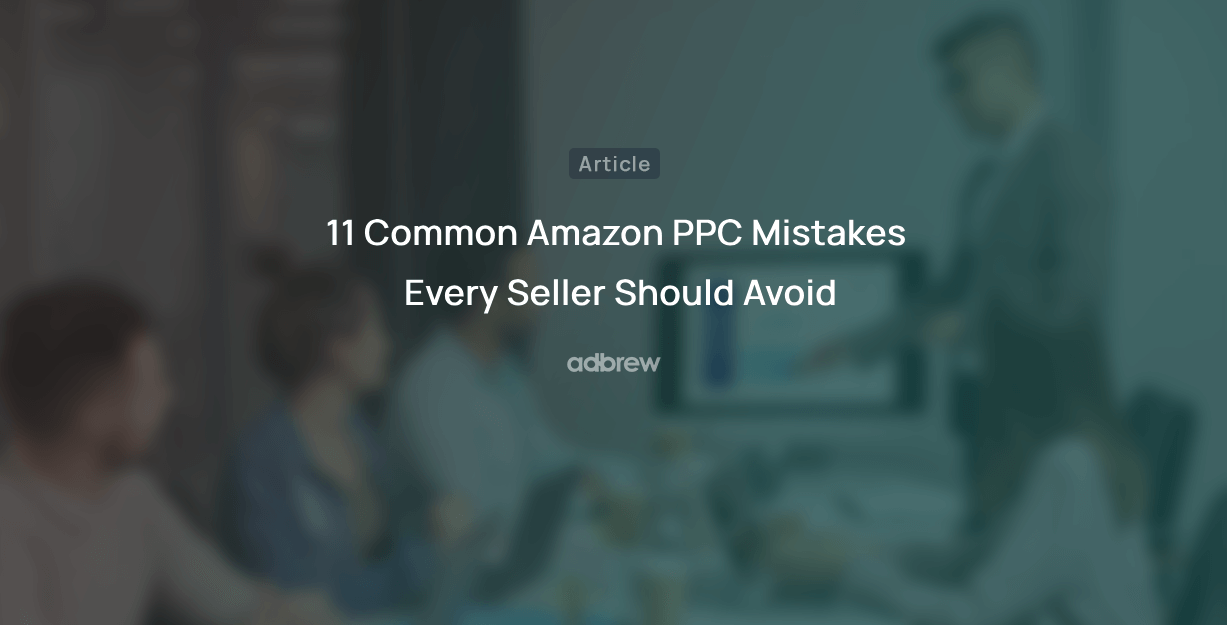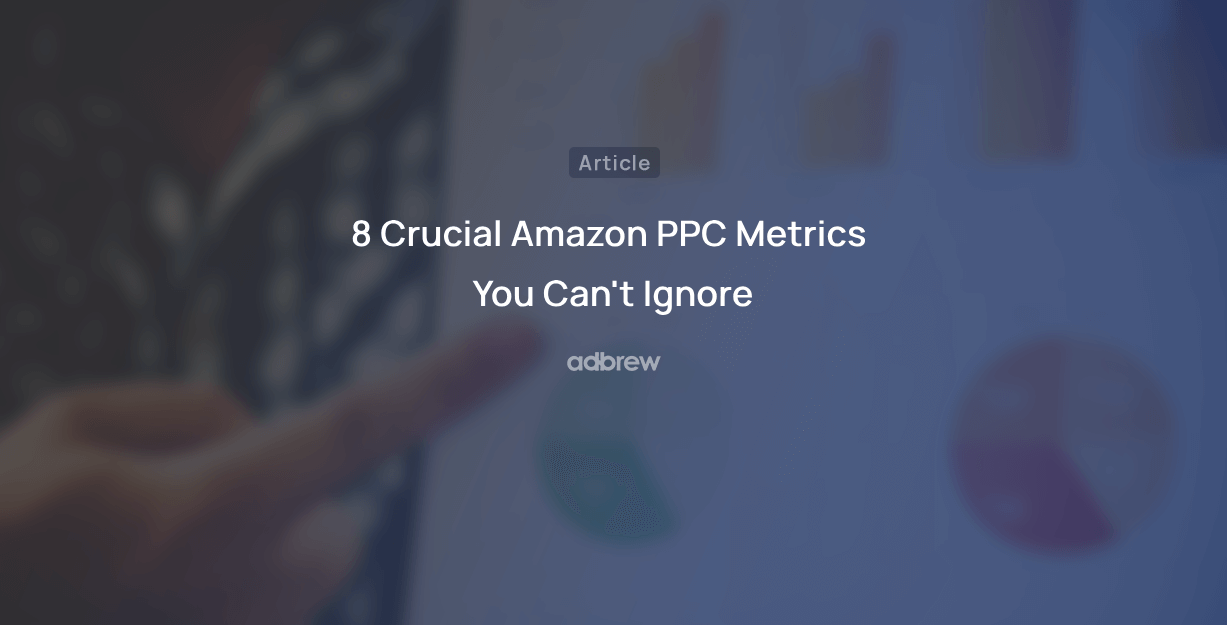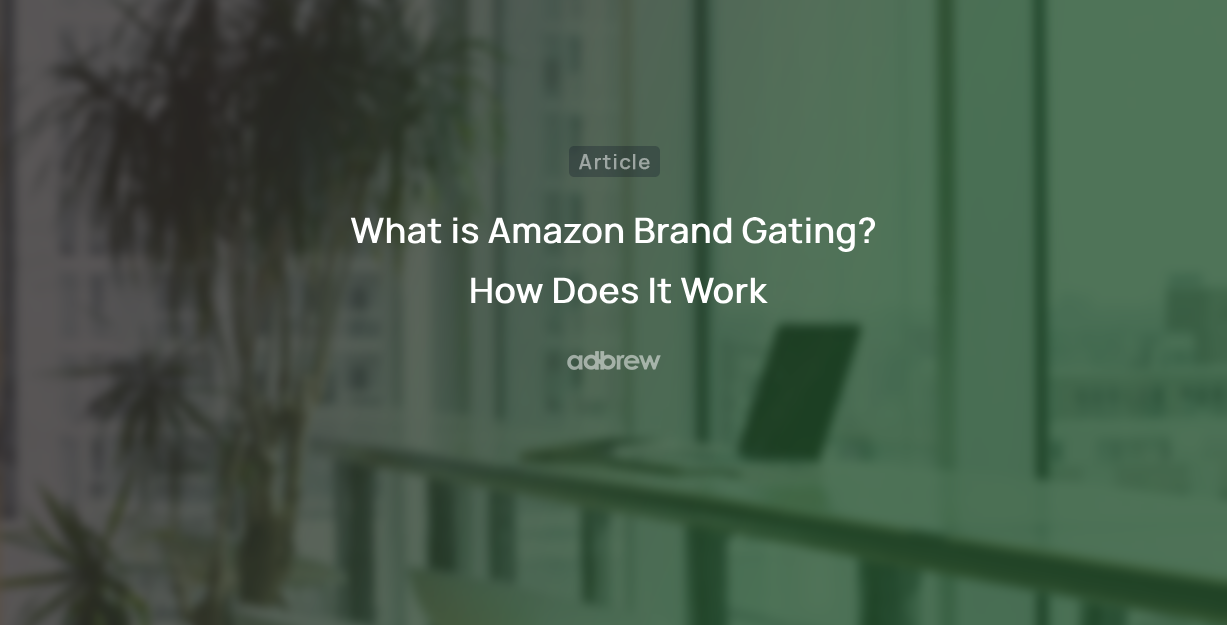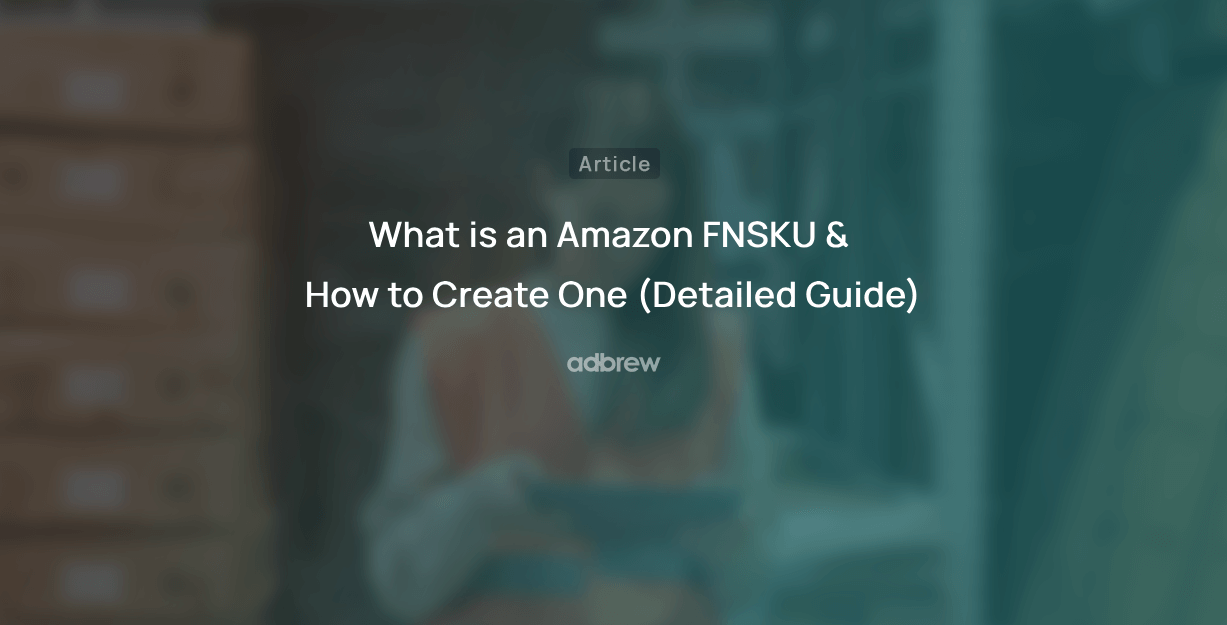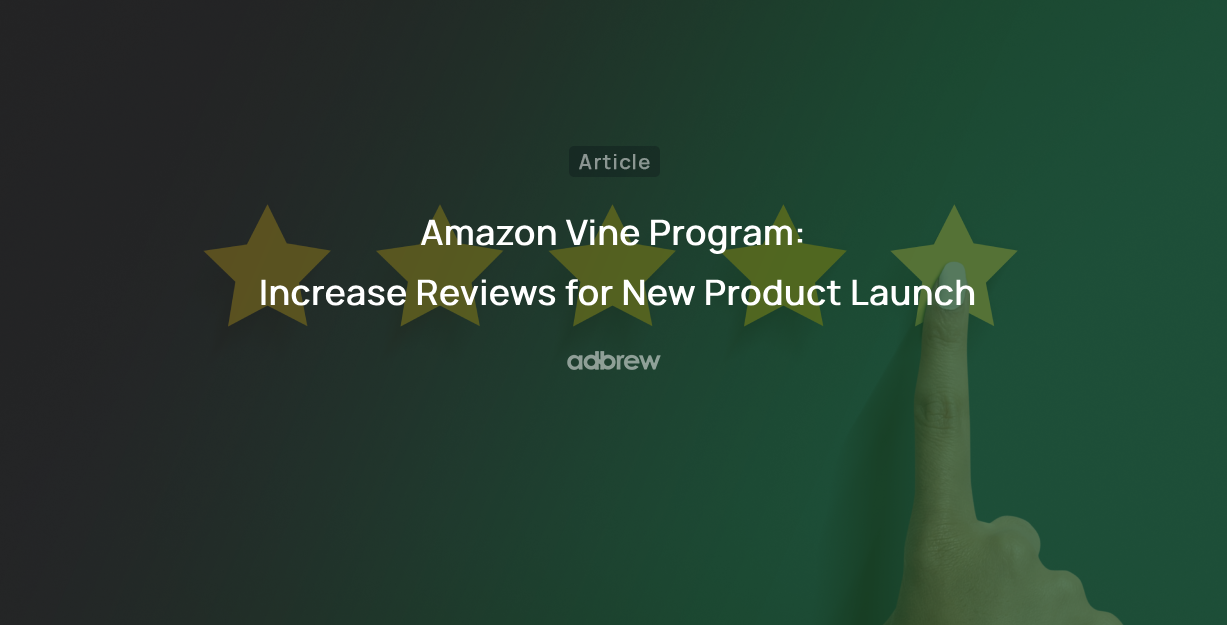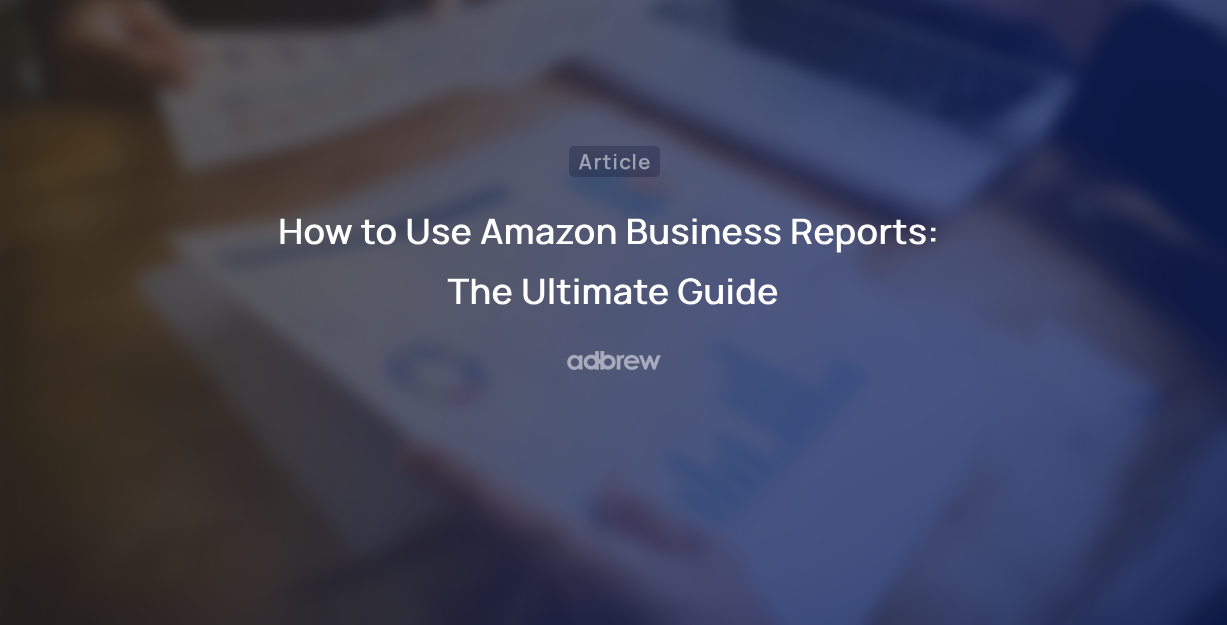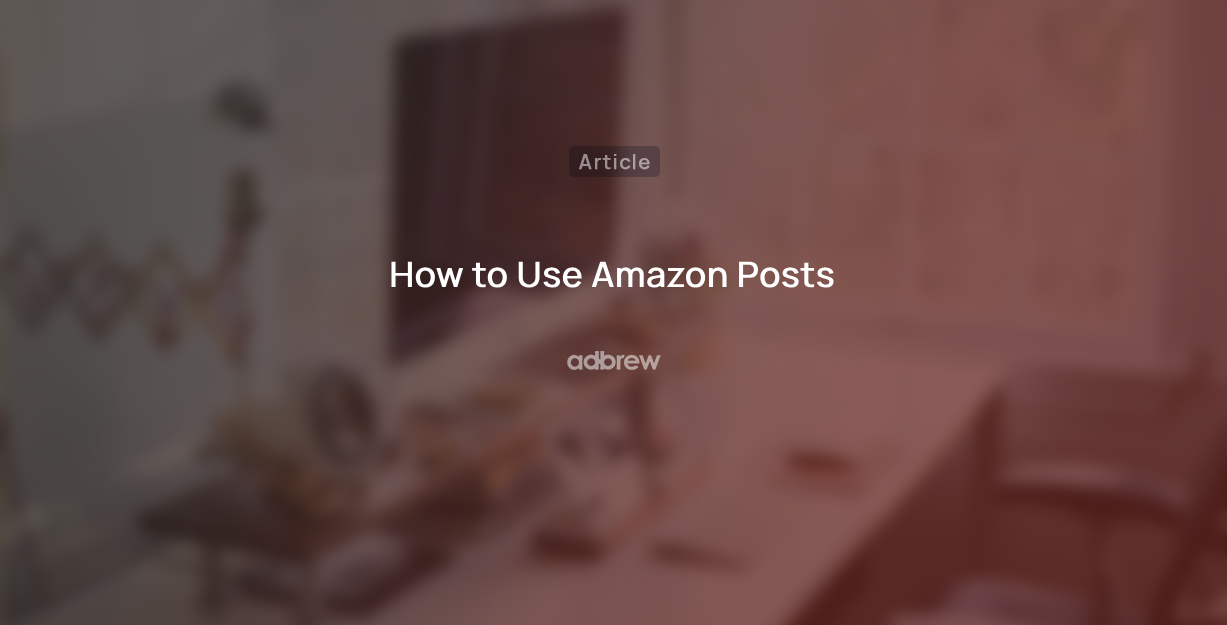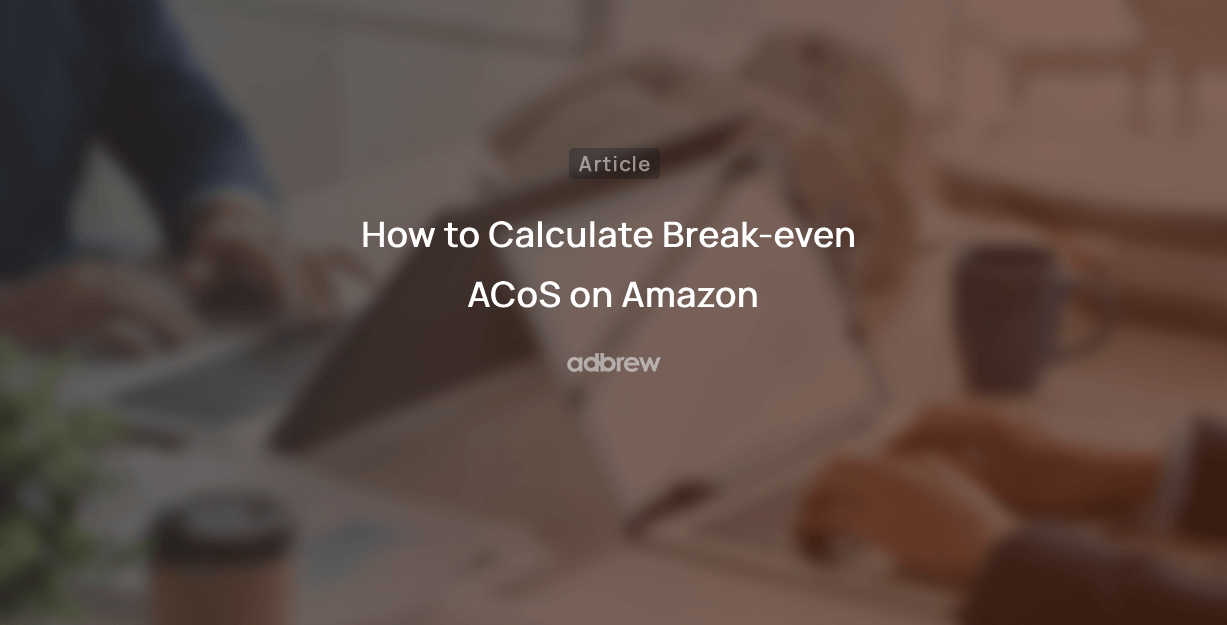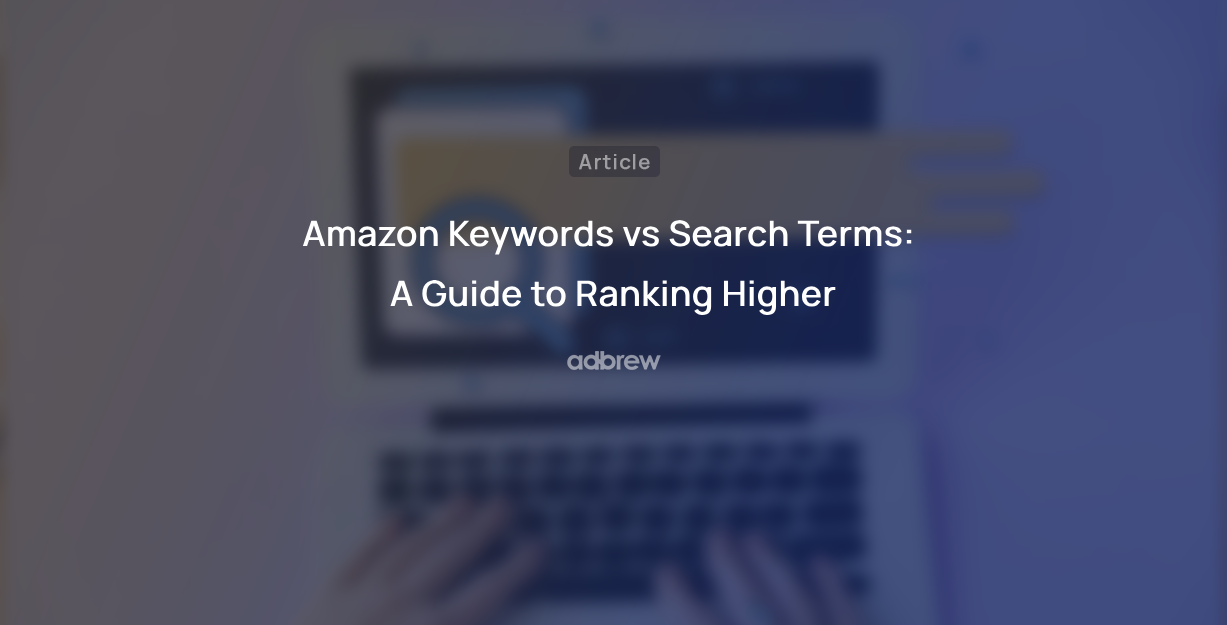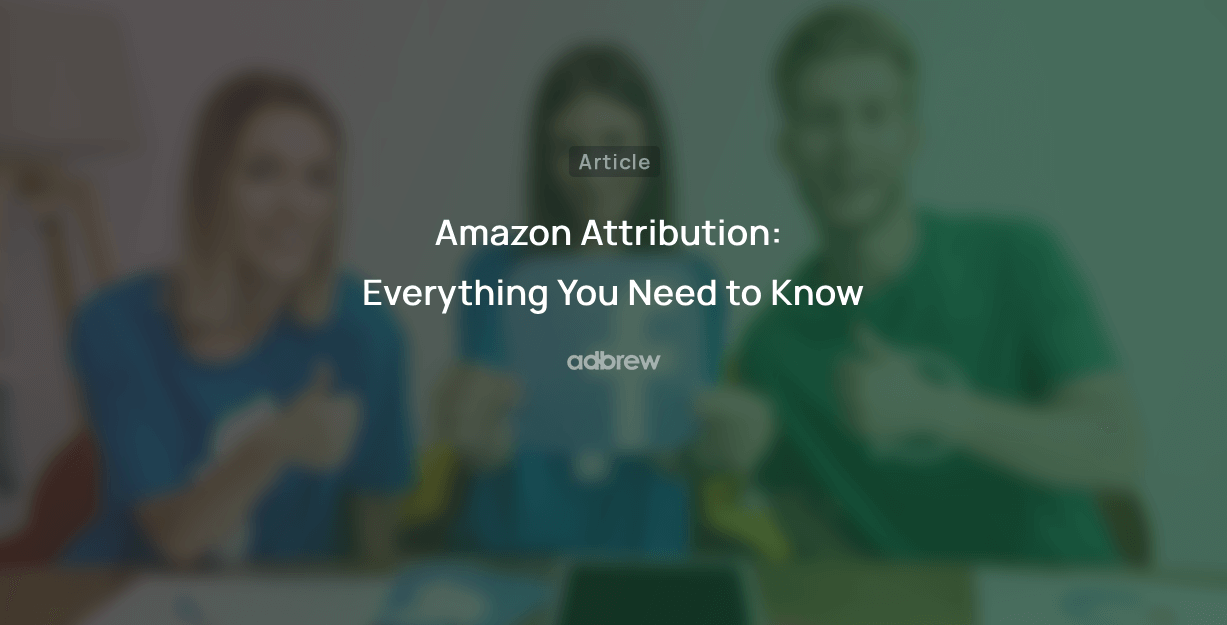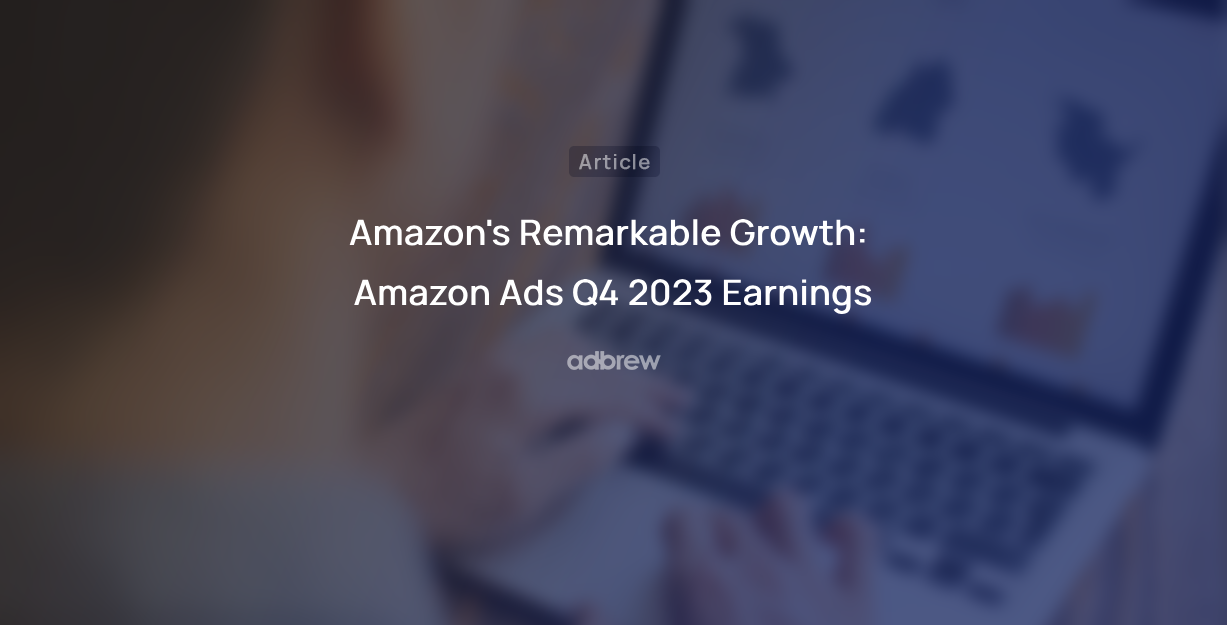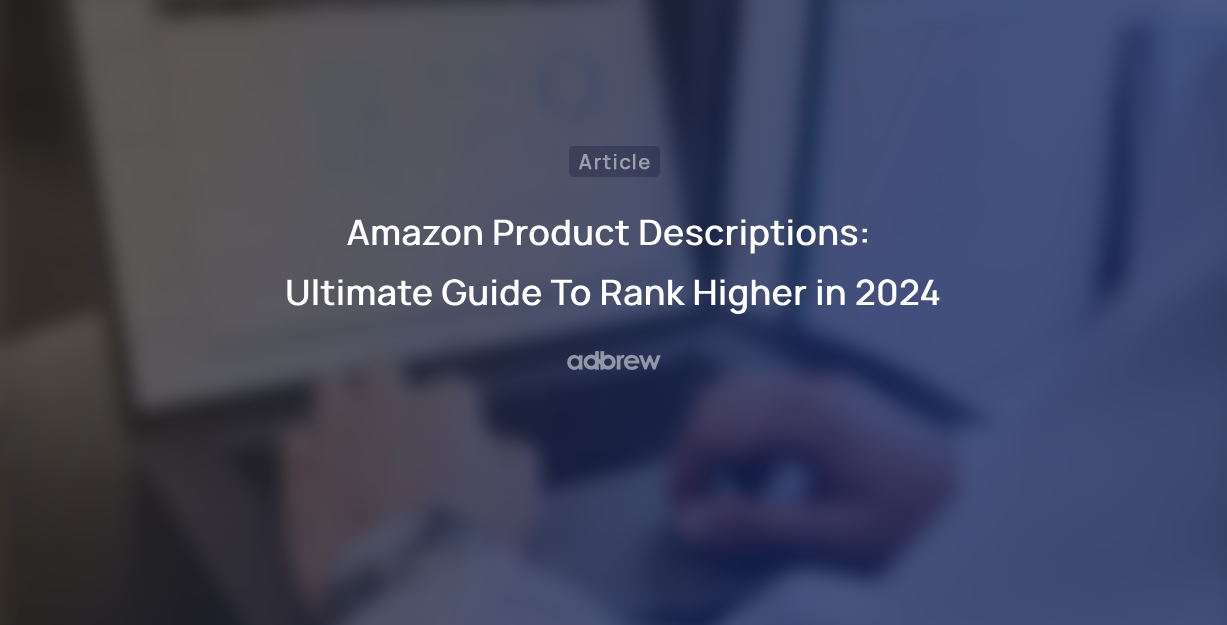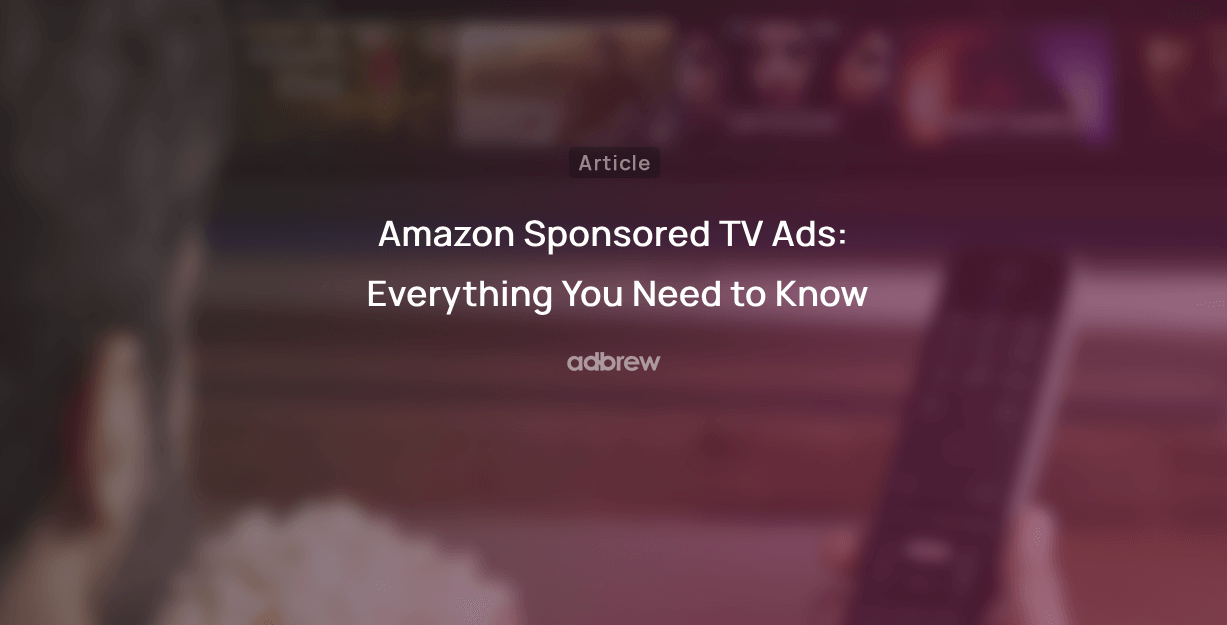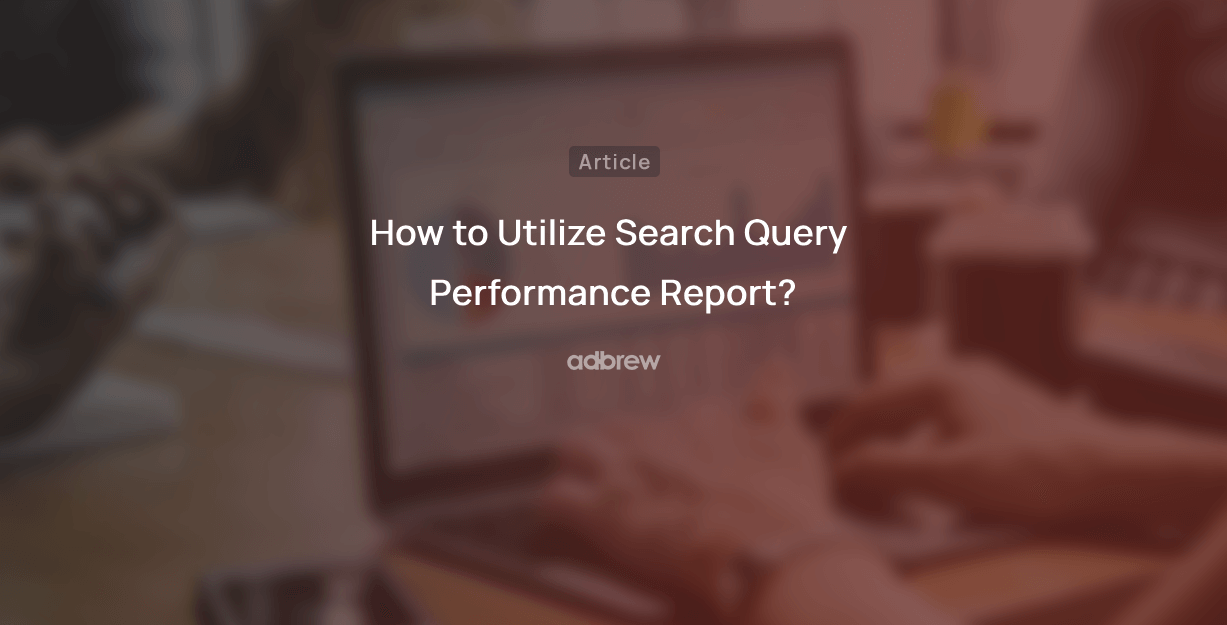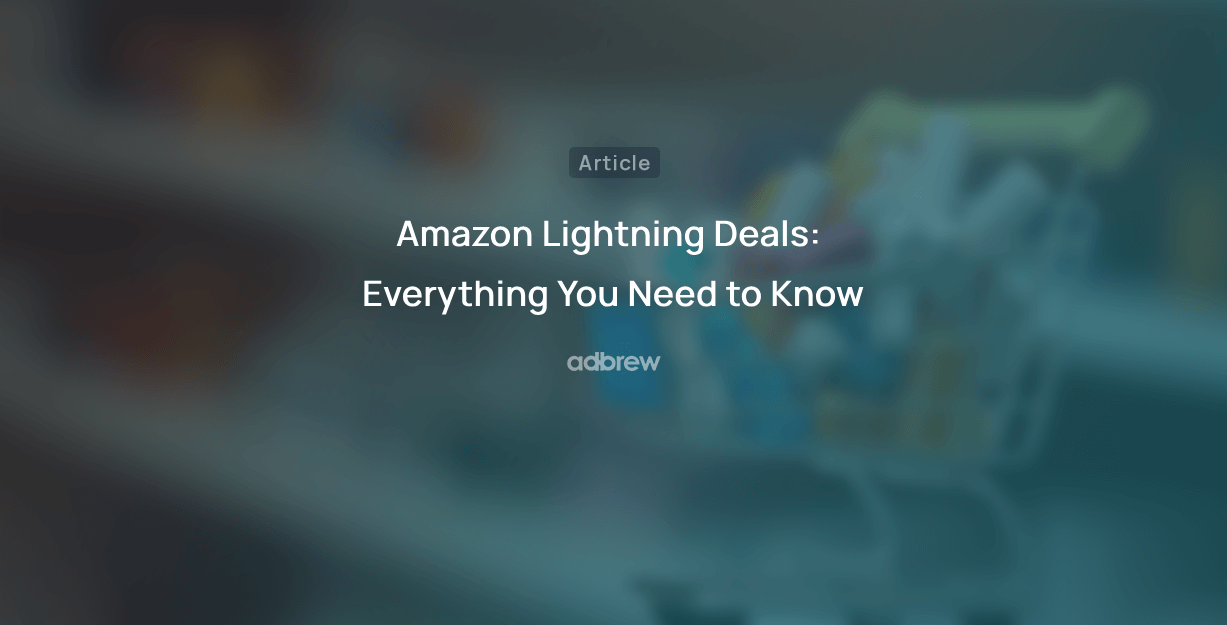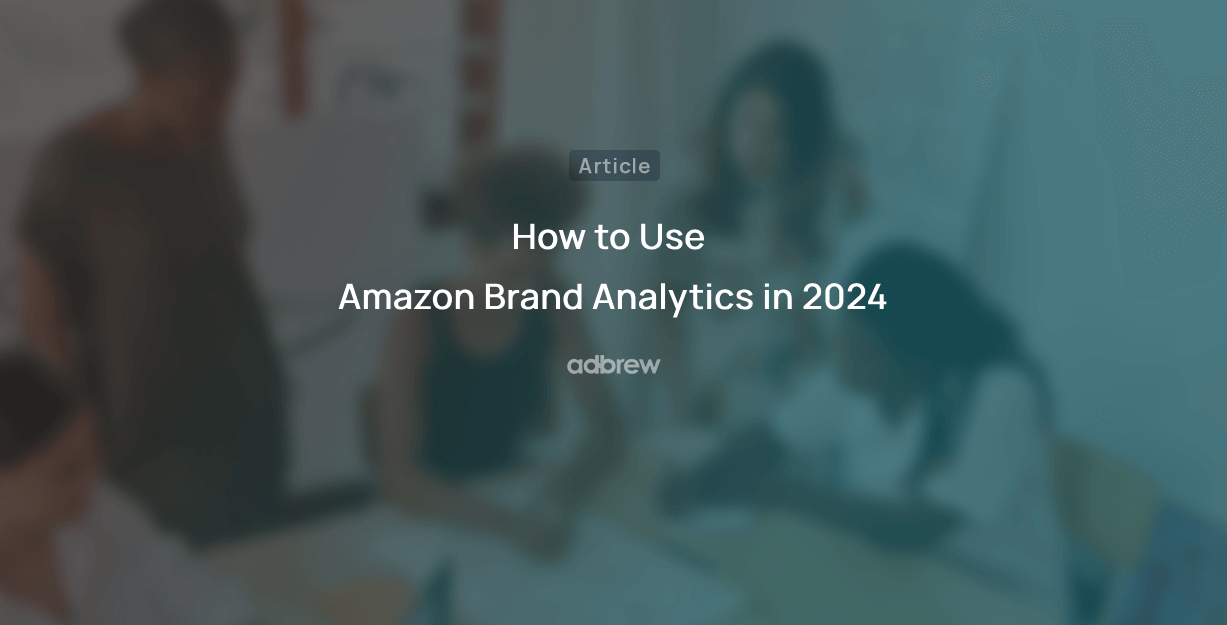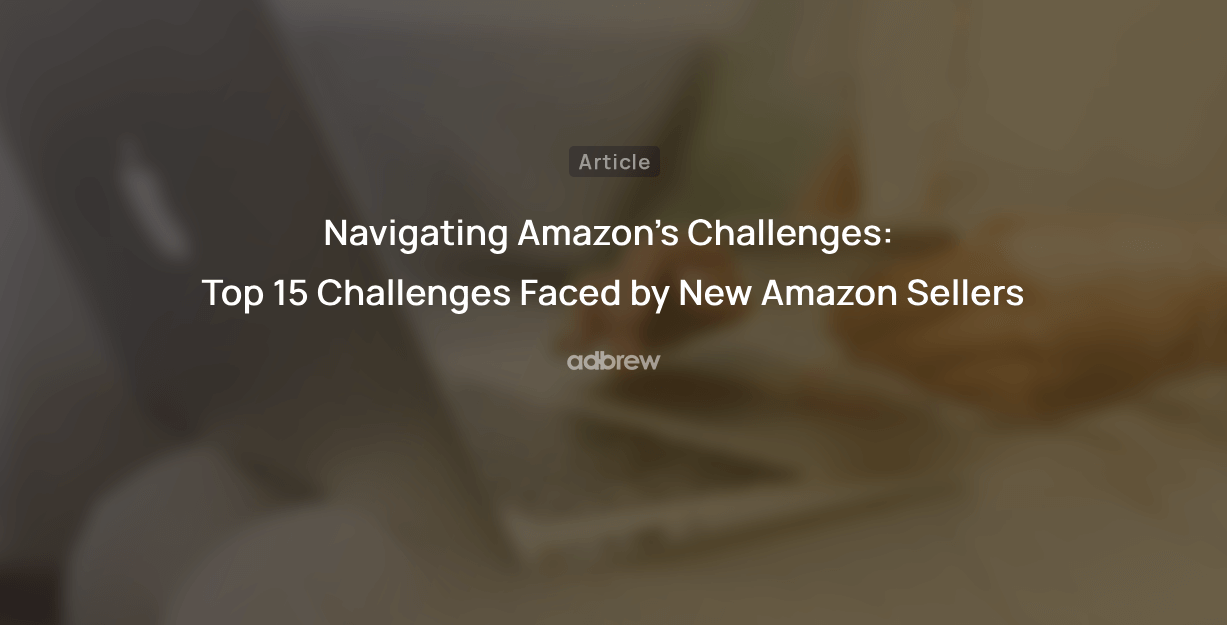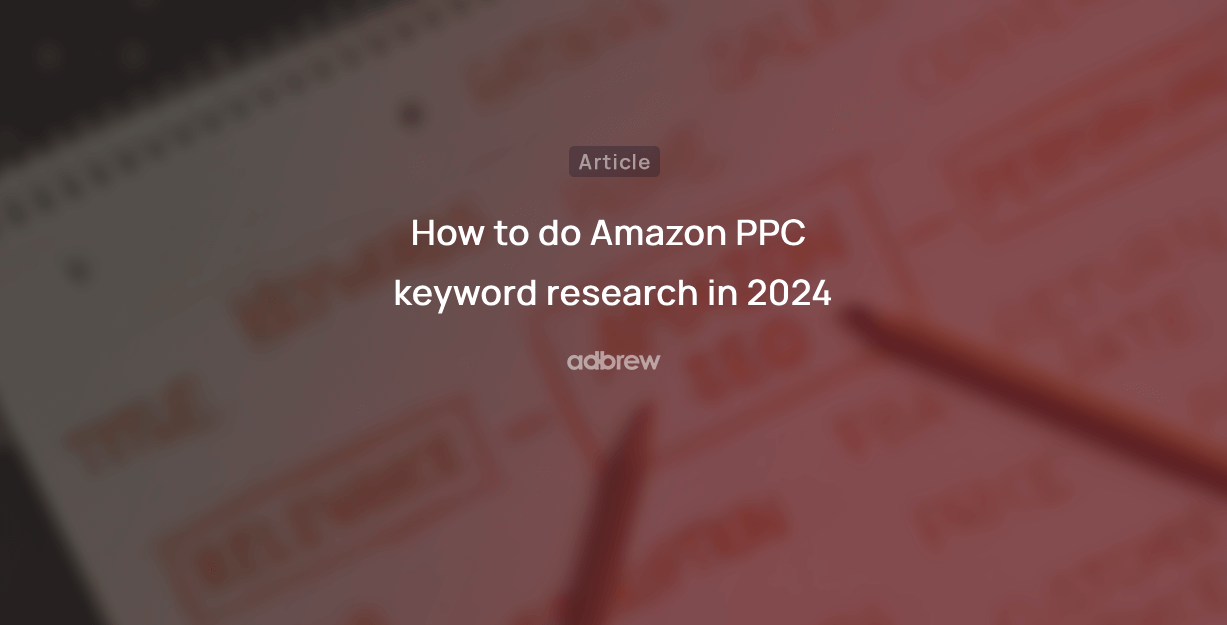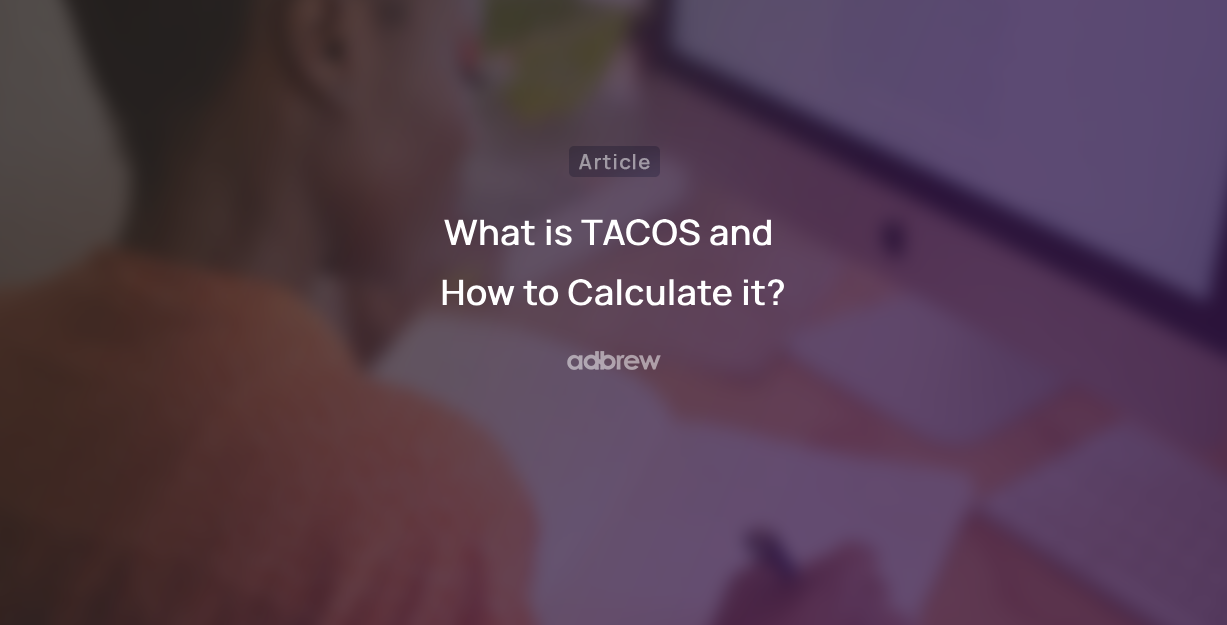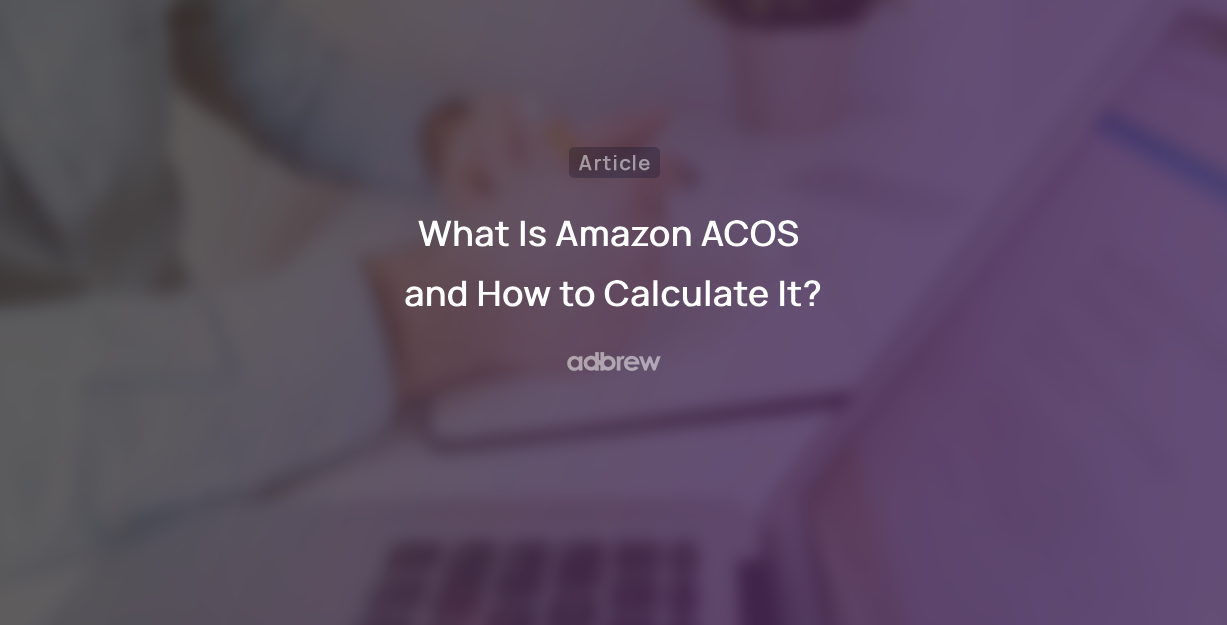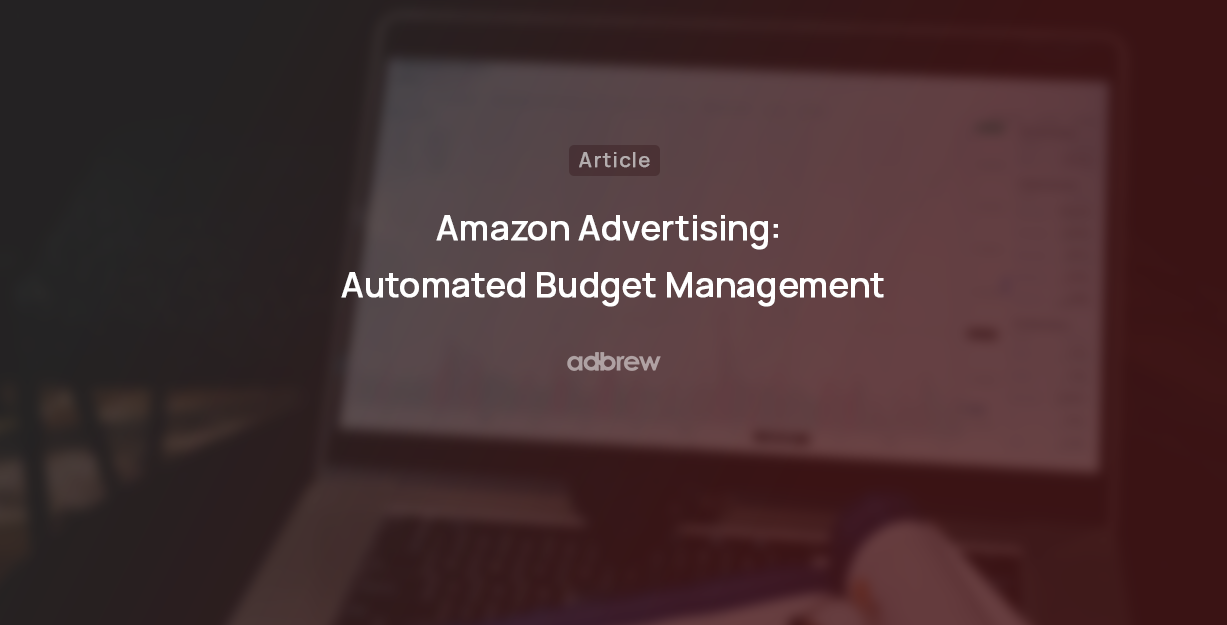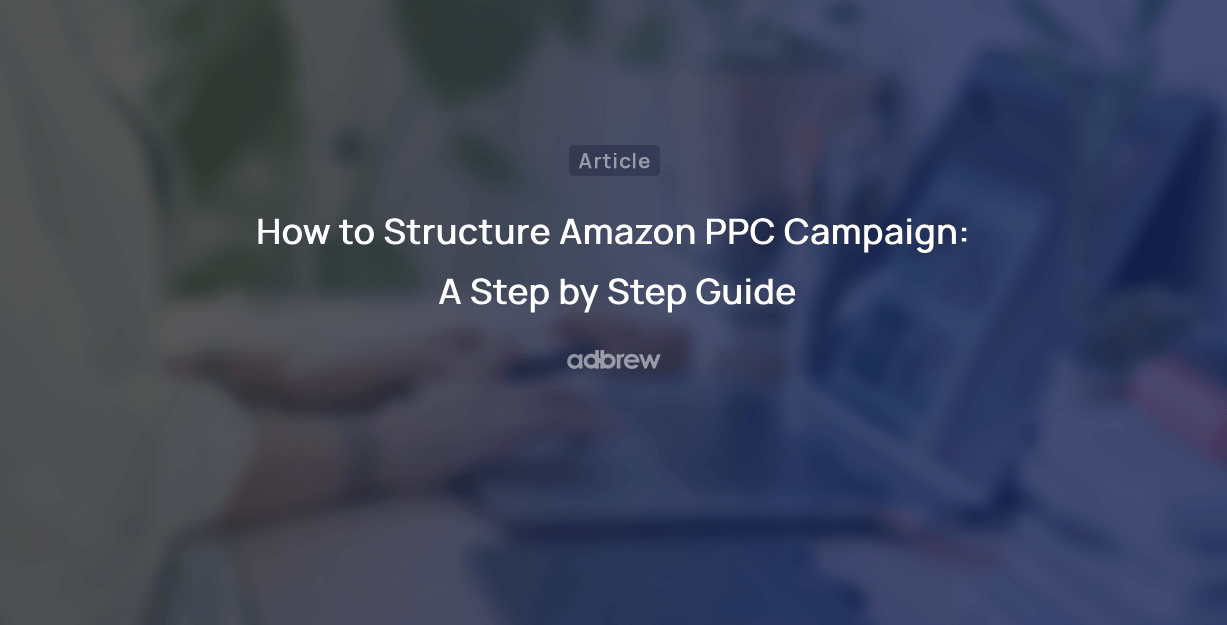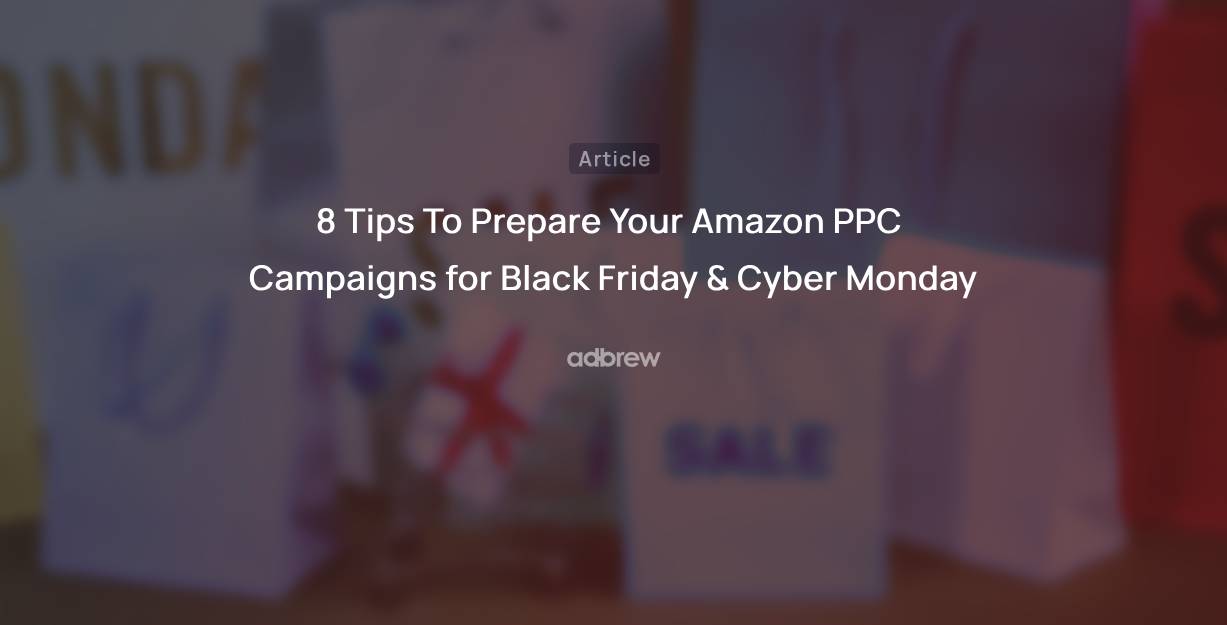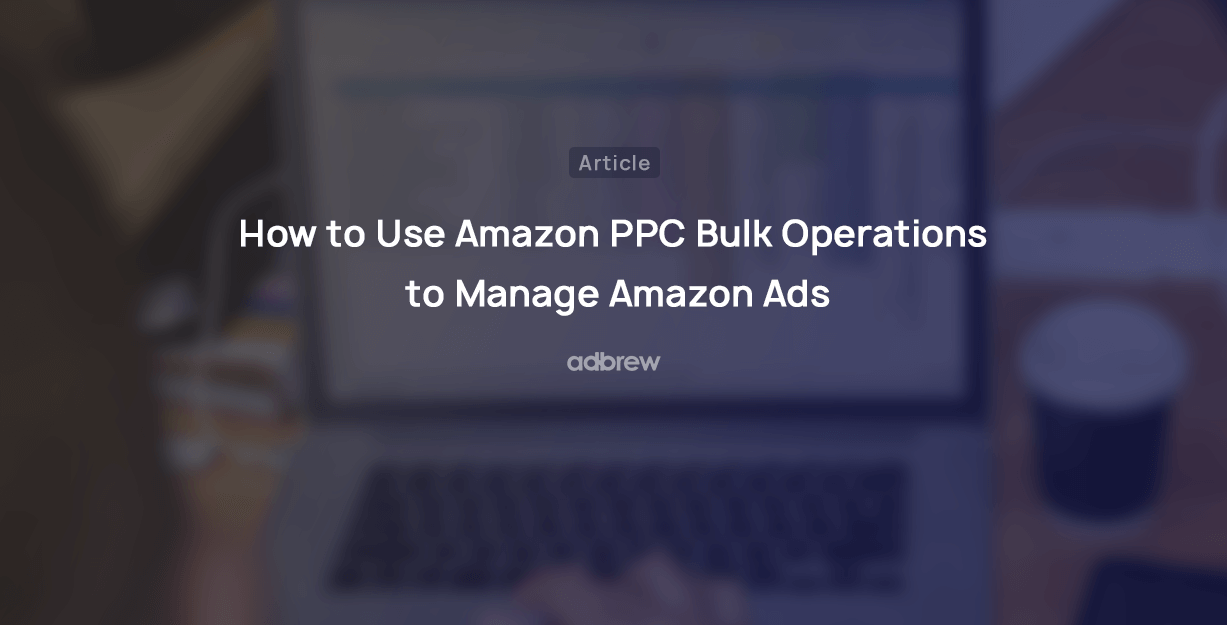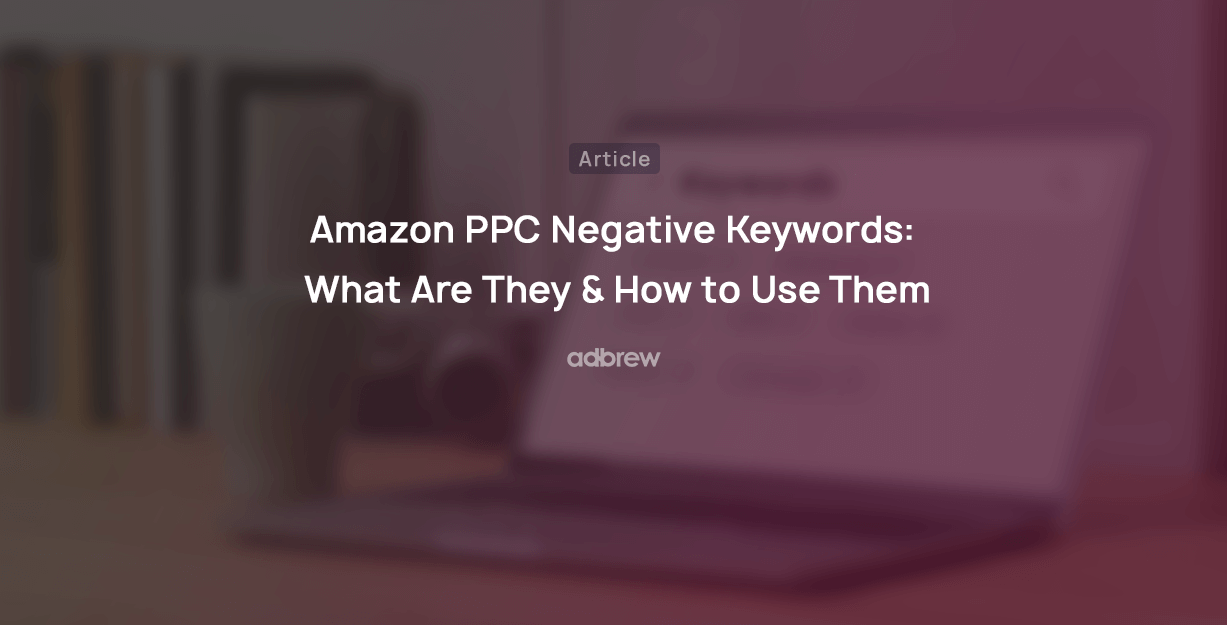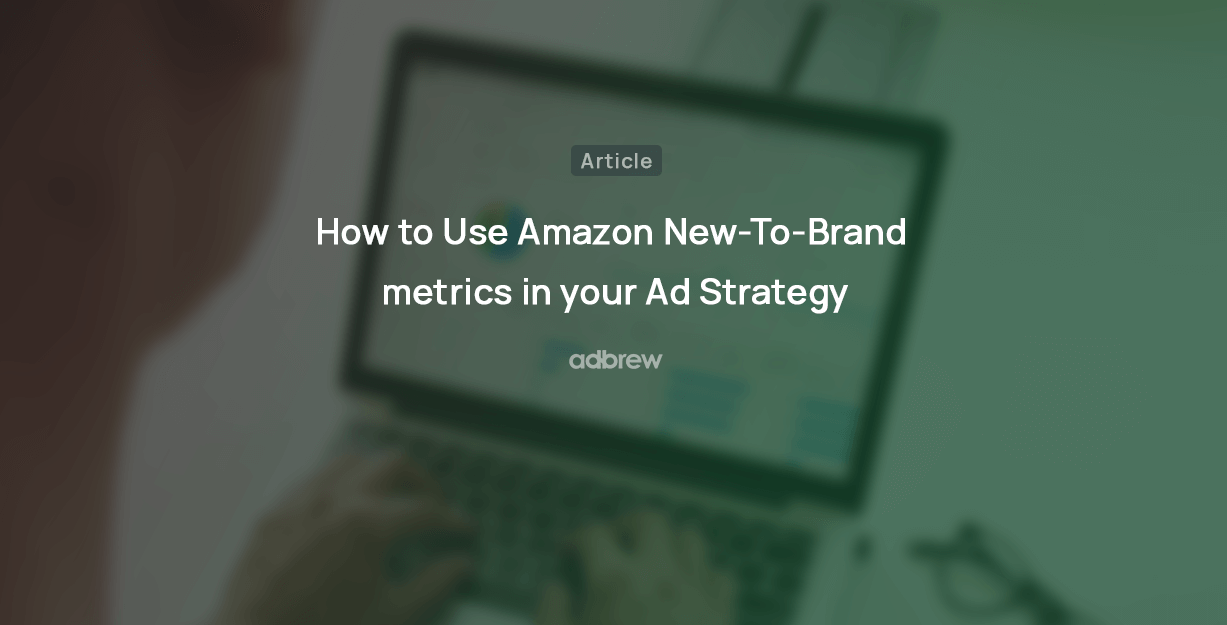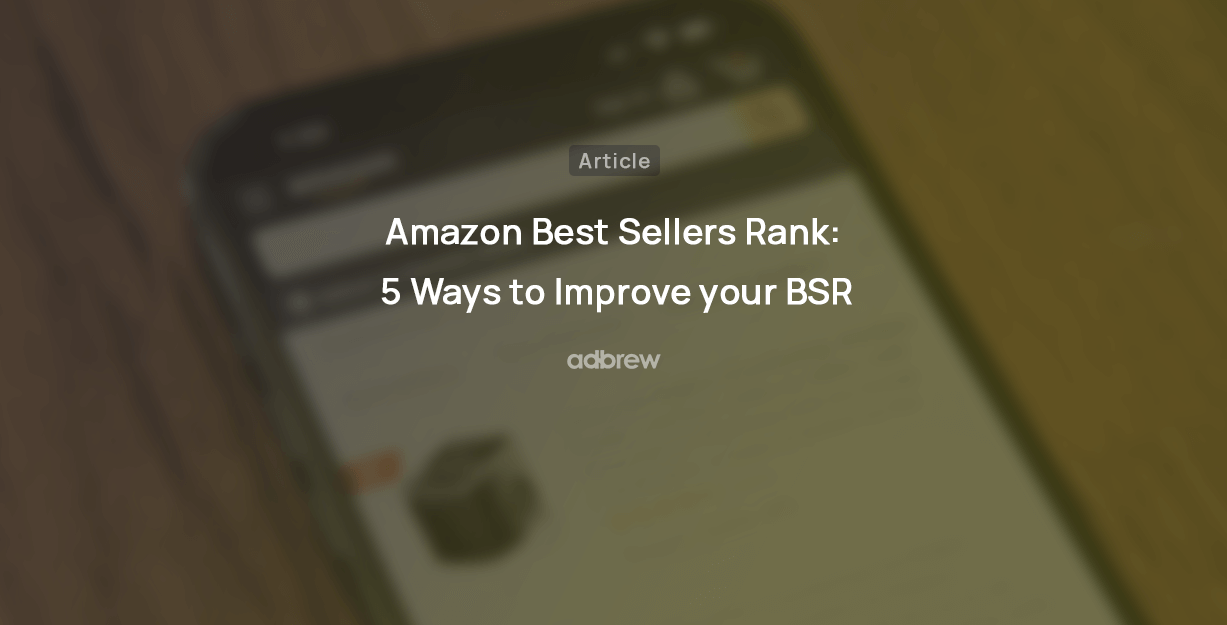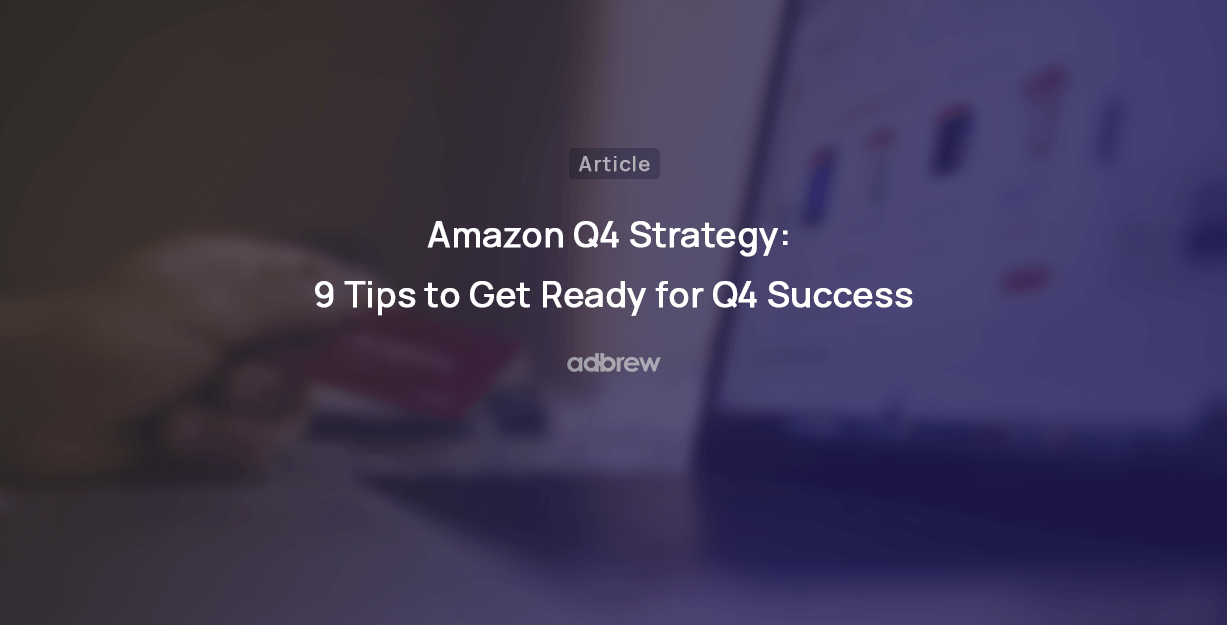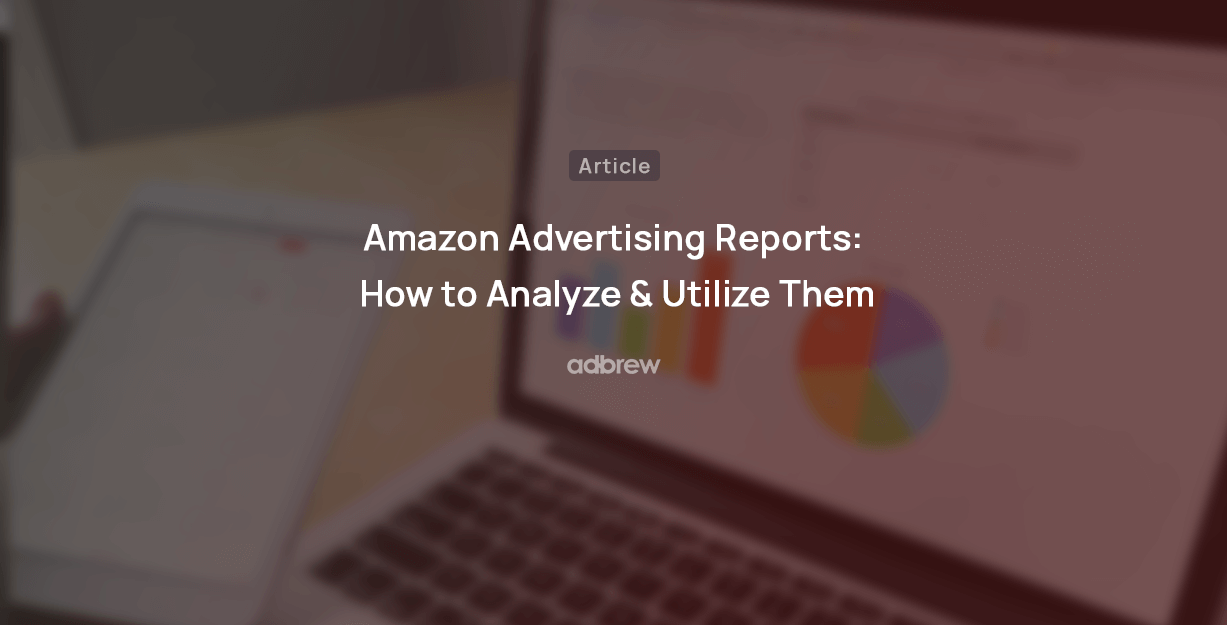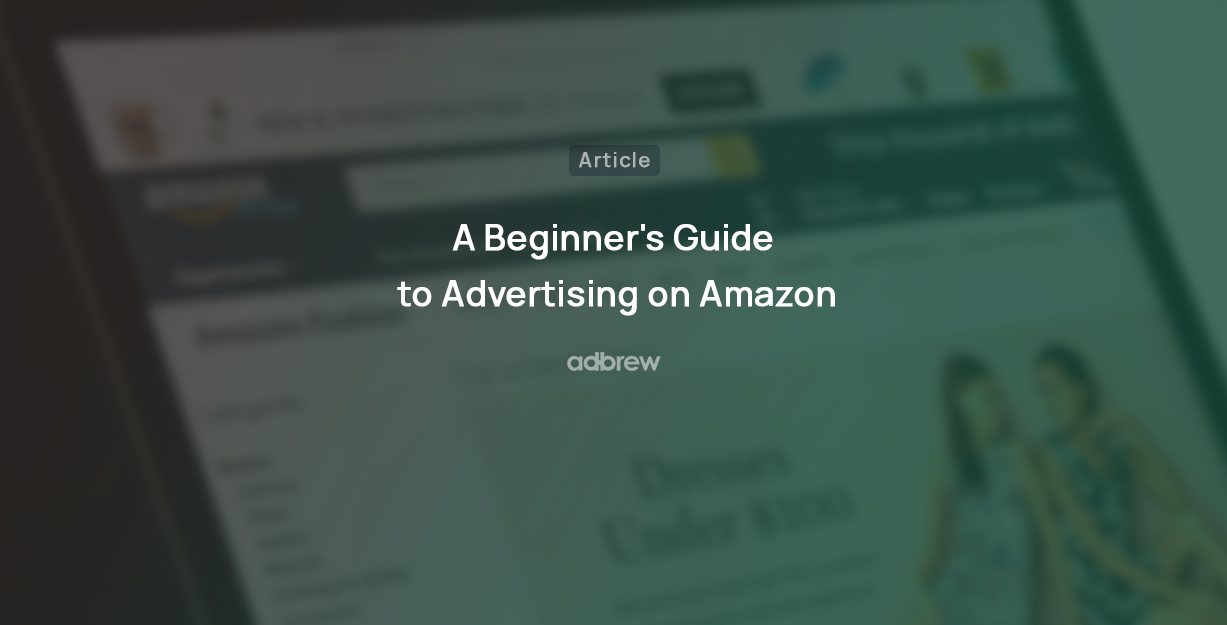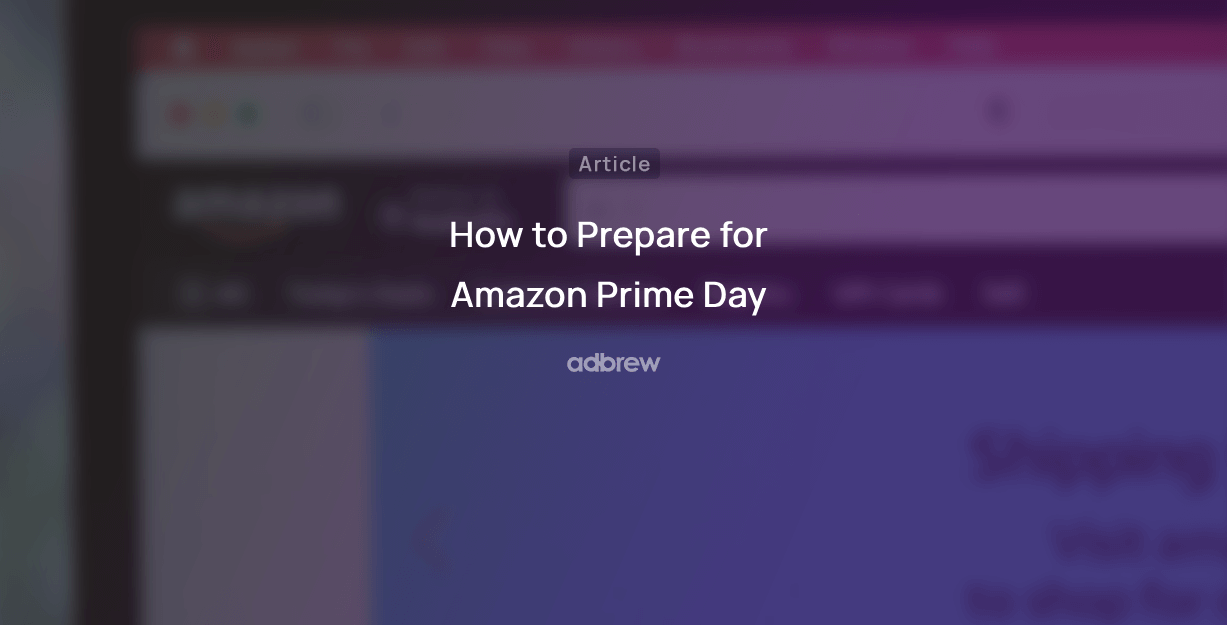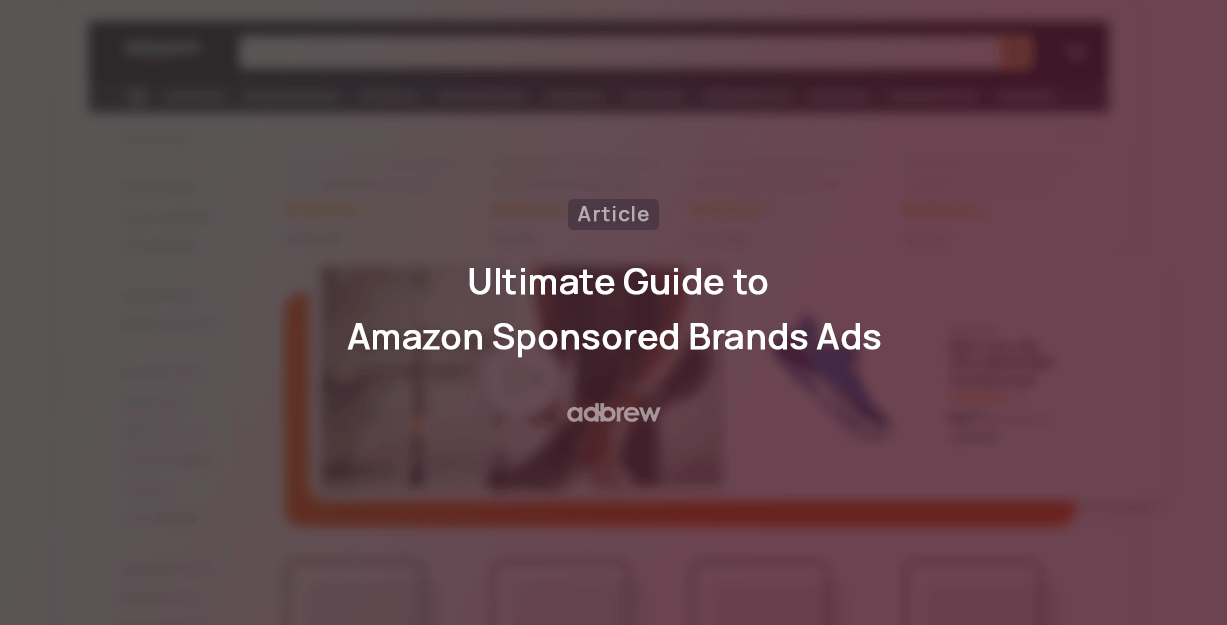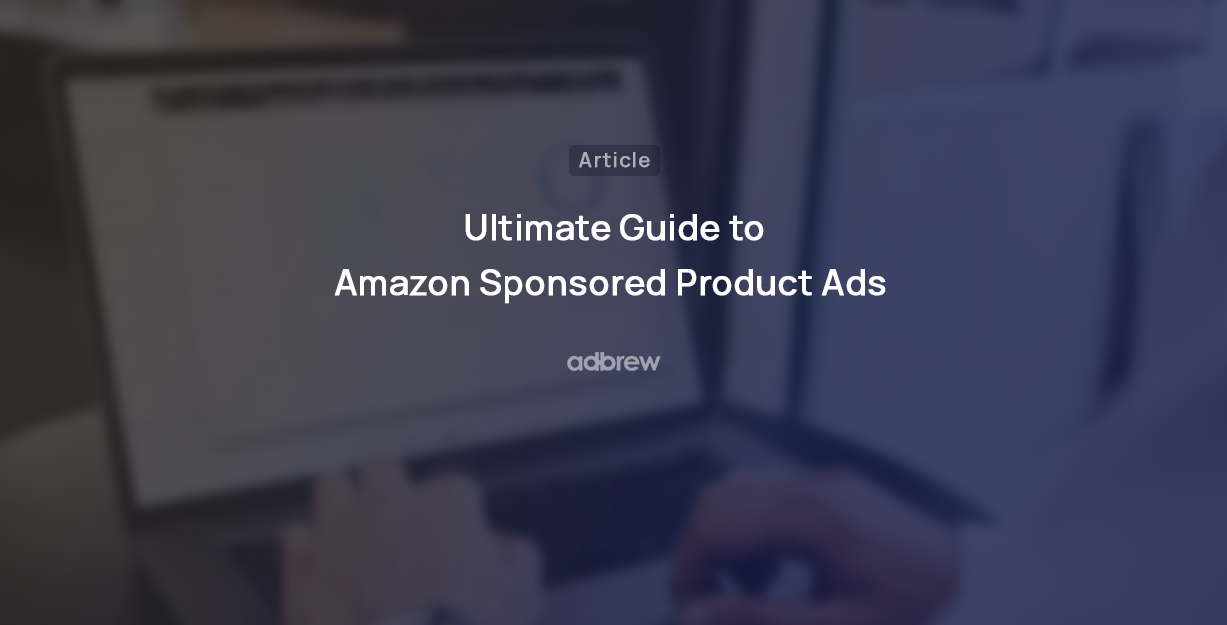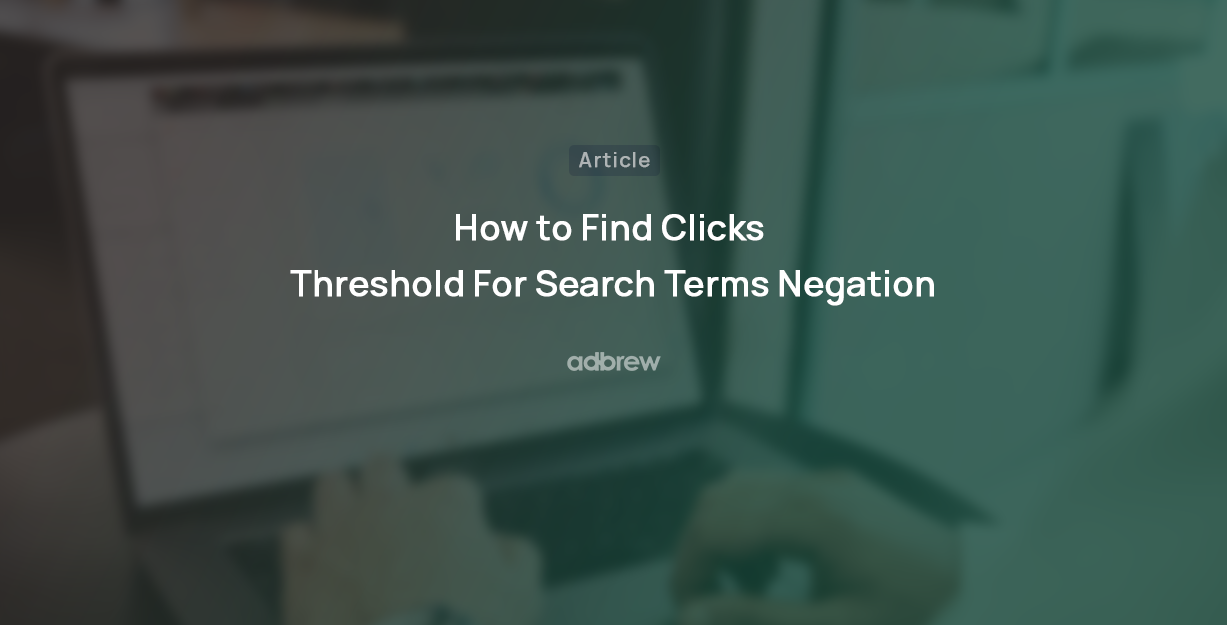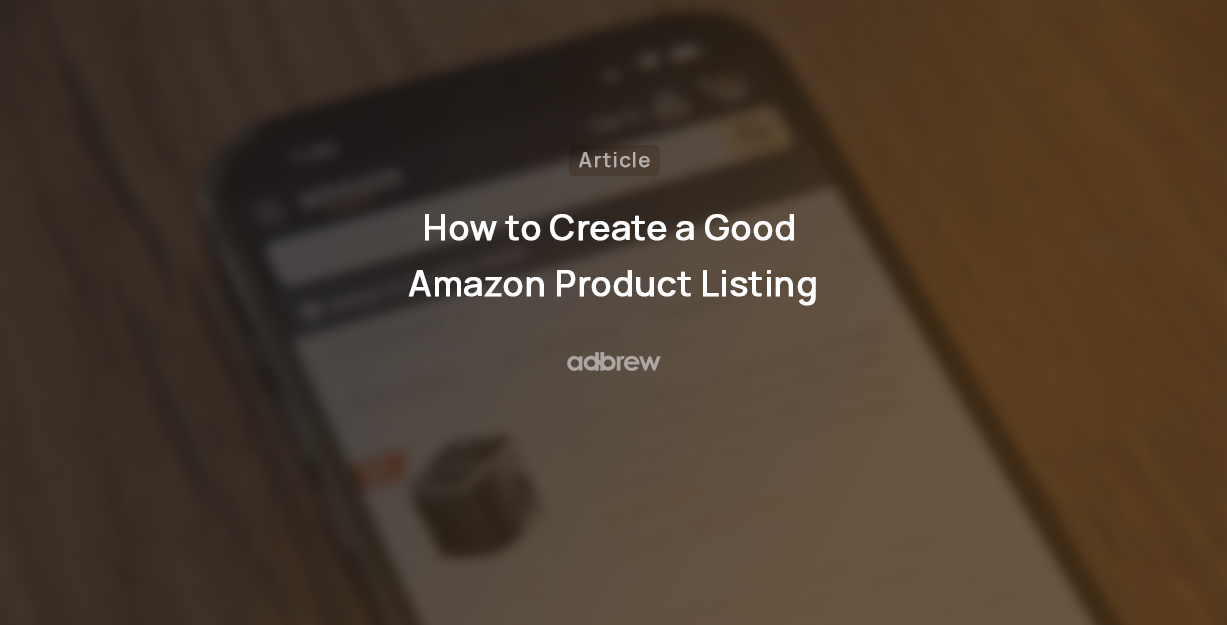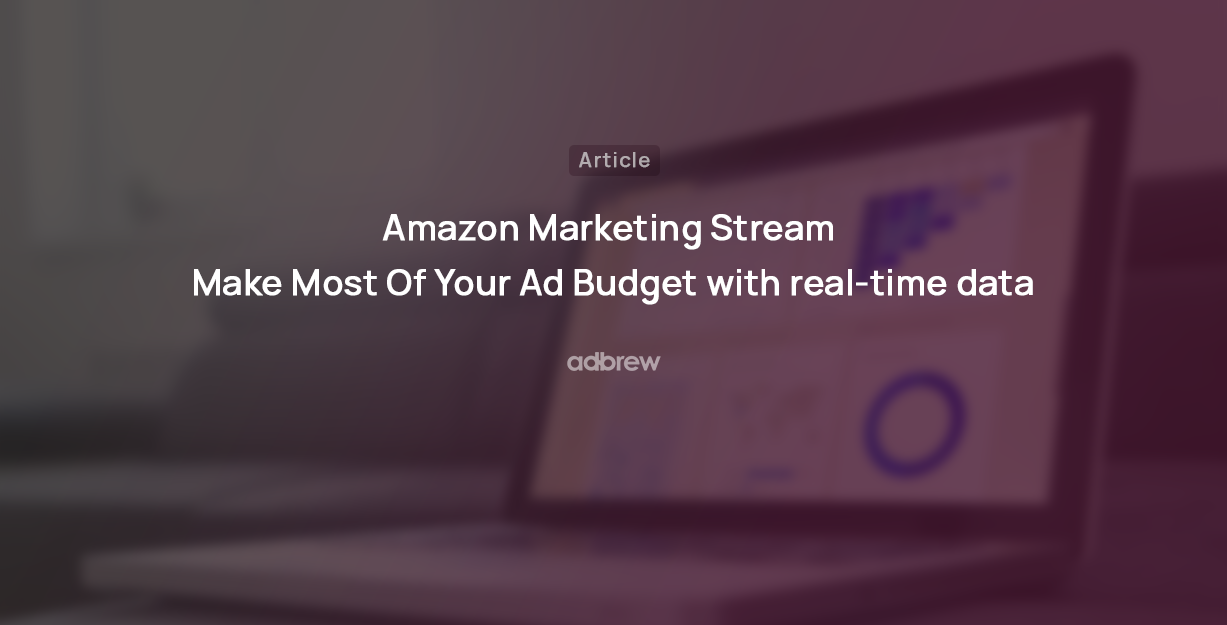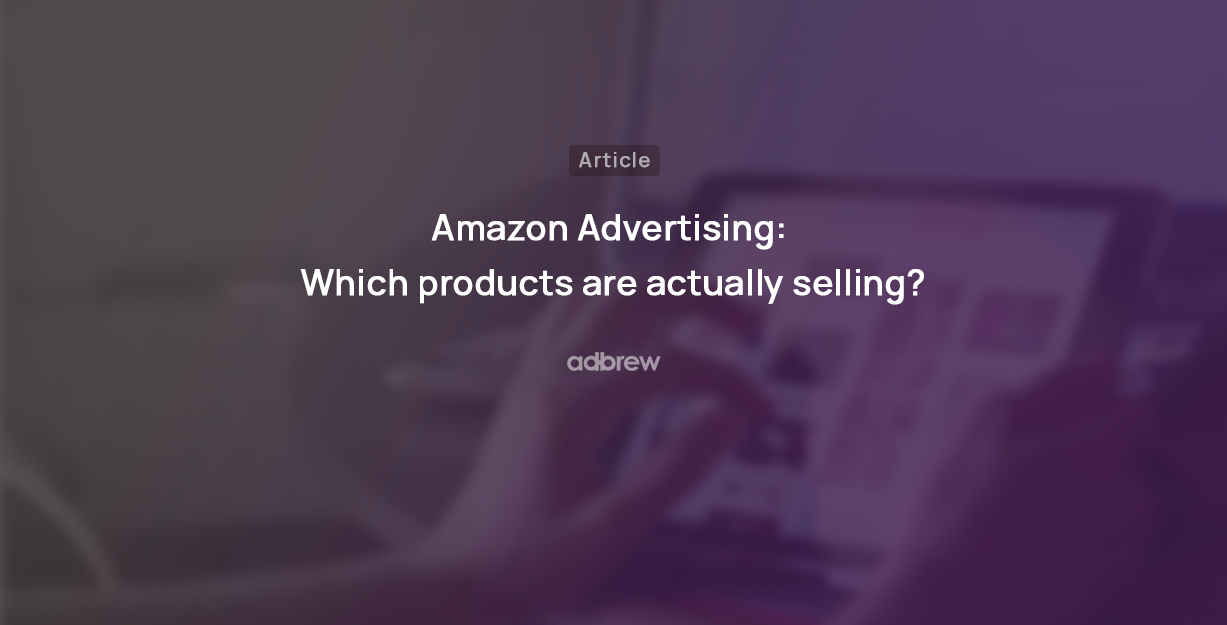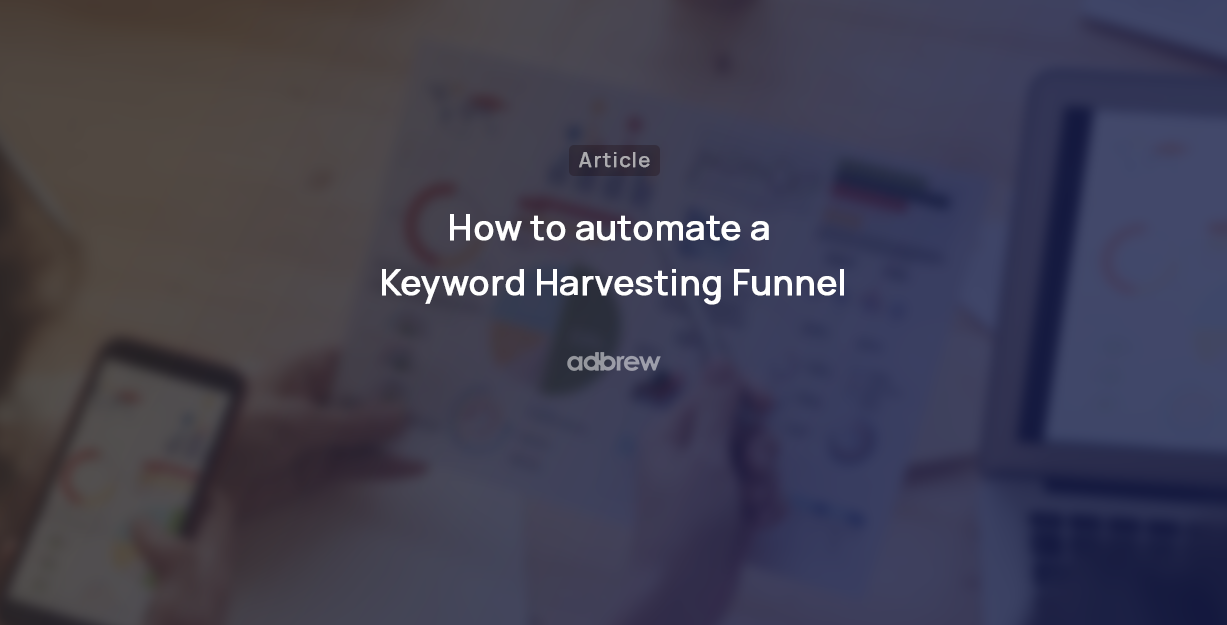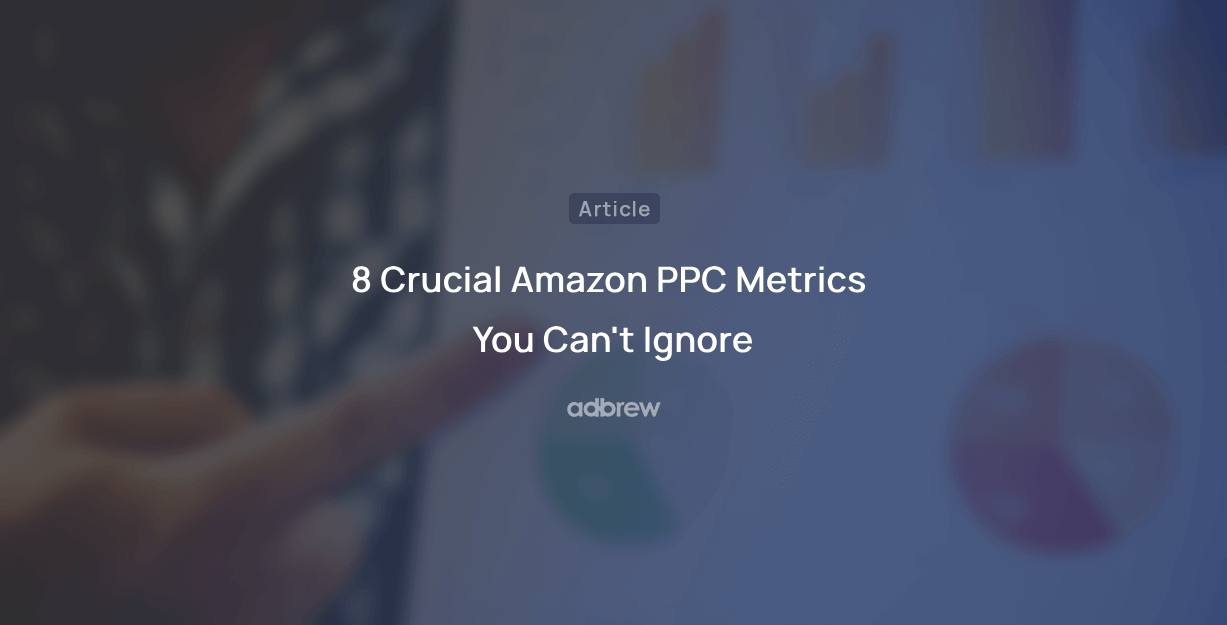
If you are running ads on Amazon, you’ll come across a sea of data in your advertising console.
But does this mean you need to keep track of all that data?
Not really.
In this blog post, we will delve into a handful of the most important Amazon PPC performance metrics, explaining what they tell you and offering actionable tips to optimize and control them for maximum ad campaign impact.
1. Impressions
Impressions represent the number of times your ad is displayed on Amazon’s search results or product detail pages. It’s crucial to monitor impressions to gauge the visibility of your products among potential customers. A higher number of impressions indicates that your ads are being shown to a broader audience, potentially increasing brand exposure and driving traffic to your product listings.
Tips to Increase Impressions:
Utilize different match types: Use a mix of broad, phrase, and exact match types in your advertising campaign. Broad match types can get you more impressions, while phrase and exact will ensure your ads are shown for the most relevant searches.
Run different ad types: Utilize Sponsored Products, Sponsored Brands, and Sponsored Display campaigns to reach a wider audience across different placements of Amazon.
High-volume keywords: Focus on high-volume keywords that people searching for your product would use. Utilize Amazon Seller Central tools like Product Opportunity Explorer and Brand Analytics to identify high-volume, relevant keywords.
2. Clicks
Clicks refer to the number of times users click on your ads when they see your ads on search results or product detail pages. This metric measures the effectiveness of your ad copy, product image, and targeting in enticing potential customers to visit your product pages. Higher click volumes suggest that your ads are compelling and relevant to shoppers, driving them to engage further with your listings.
3. Click-Through Rate (CTR)
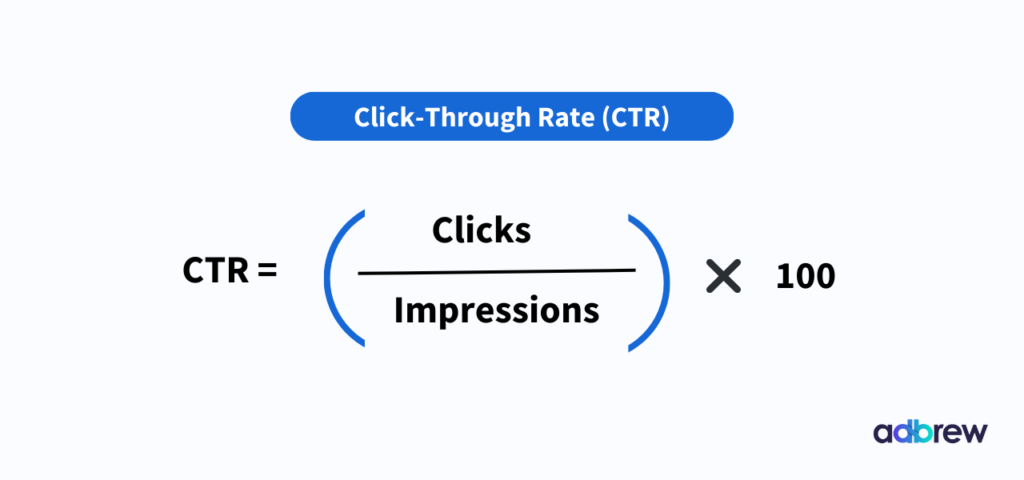
CTR is calculated by dividing the number of clicks by the number of impressions (Clicks / Impressions). It indicates the effectiveness of your ads in generating clicks relative to the number of times they are shown. A high CTR signifies that your ads are resonating with users and prompting them to take action, while a low CTR may indicate that adjustments are needed to improve ad relevance and appeal.
Tips to Increase CTR:
Target relevant keywords: The more relevant keywords are to your product, the higher the chance it has for people to click on your product.
High-quality images: Use professional product images that showcase your product clearly and enticingly.
A/B testing: Test different ad variations with different headlines and images to see which ones get the most clicks.
Promotions and offers: Consider incorporating promotions like coupons or special offers for your products to grab attention and increase clicks.
Aim for Top of Search: You should expect at least 1-2 times higher CTR on top of search results than other ad placements on Amazon, as these are some of the most prominent ad placements and are visible to everyone searching for the targeted keyword.
4. Conversion Rate

Conversion rate measures the percentage of users who click on your ad and subsequently make a purchase. It indicates the effectiveness of your product listings and offering in converting ad clicks into sales. A higher conversion rate signifies that your products are meeting the needs and expectations of shoppers, leading to a greater likelihood of purchase.
Tips to Increase Conversion Rate:
Optimized Product Listings: Ensure your product listings have high-quality images, detailed descriptions, and positive customer reviews. This builds trust and encourages clicks to convert into sales.
Competitive Pricing: Be mindful of your pricing strategy. While you don’t necessarily need to be the cheapest, aim to be competitively priced within your niche.
Fast Fulfillment: Fast and reliable fulfillment, like utilizing Fulfillment by Amazon (FBA), can significantly improve conversion rates.
Learn more about product listing optimization:
5. Cost-Per-Click (CPC)
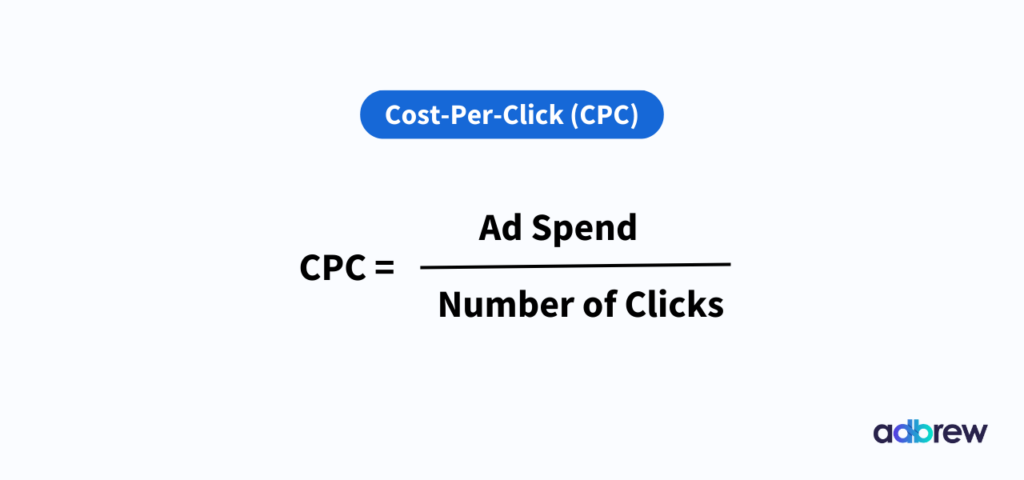
CPC represents the average amount you pay each time a user clicks on your ad. It directly influences your advertising costs and ROI, making it essential to manage effectively. Lower CPC values allow you to acquire traffic and conversions at a more cost-efficient rate, maximizing your advertising budget’s effectiveness
Tips to Reduce Cost-Per-Click:
Refine bids: Regularly monitor and adjust your bids for different keywords. Increase bids for high-performing keywords and decrease bids for those with low conversion rates or high CPCs.
Focus on long-tail keywords: Generally, keywords like “light roast organic coffee beans” will have a lower cost-per-click (CPC) compared to shorter, broader terms like “coffee beans.” This is because long-tail keywords have less competition. Fewer advertisers are bidding on them, which can lead to lower CPCs for you.
Opt for Down-only bidding strategy: There are three main bidding strategies Amazon offers for Amazon PPC campaigns that influence your Cost-Per-Click (CPC):
Up and Down Bidding: This strategy automatically adjusts your bids up for clicks with a higher chance of conversion and down for clicks with a lower chance of conversion.
Down Only Bidding: As the name suggests, this strategy only reduces bids for clicks that are unlikely to convert, potentially saving you money on clicks that won’t lead to sales.
Fixed Bidding: This strategy maintains a constant bid amount that you set for your targeted keywords.
Our experience suggests that ‘down only’ bidding can often be the most effective strategy for achieving optimal CPC. This is because it helps you avoid overspending on clicks that are less likely to convert, while still allowing you to compete for clicks that have a higher conversion potential.
6. Advertising Cost of Sale

ACoS calculates the ratio of advertising spend to attributed sales and is expressed as a percentage. It measures the efficiency of your advertising campaigns in generating revenue relative to the amount spent on advertising. A lower ACoS indicates that your campaigns are generating sales at a more profitable rate, while a higher ACoS may suggest that you need to optimize your ads.
Tips to Improve ACOS:
Negative keywords: Add negative keywords to exclude irrelevant searches. This prevents your ads from showing for terms that won’t convert and saves you money.
Refine bids: Increase bids for high-performing keywords and decrease bids for those with low conversion rates or high CPCs.
Optimize placement modifier: Amazon lets you fine-tune your ad visibility by adjusting bids for three key placements: Top of Search, Product Pages, and Other Search Results. Your goal should be to drive maximum impressions on placements that deliver the best results for your campaigns.
7. Break-Even ACoS
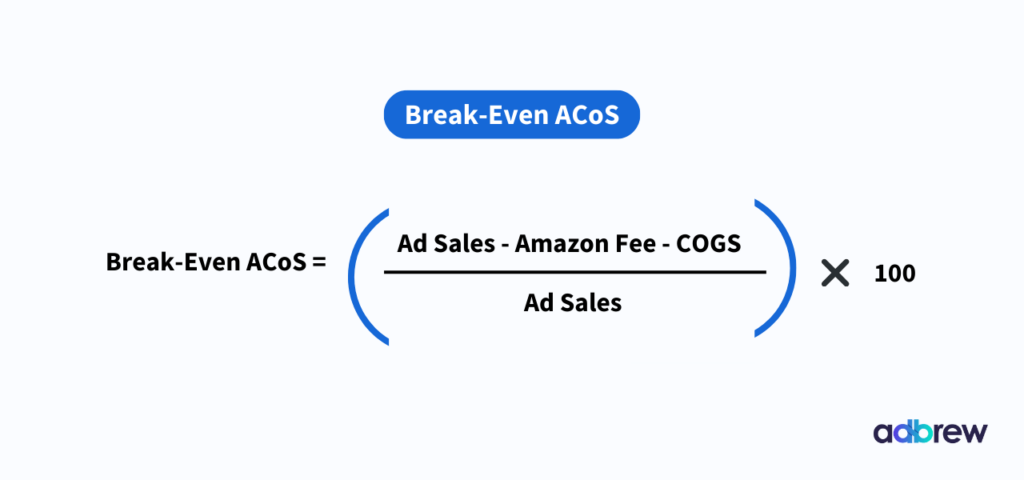
Break-Even ACoS represents the ACoS threshold at which your advertising spend equals your profit margin, resulting in a breakeven point. It helps determine the maximum ACoS you can afford while still maintaining profitability. Understanding your Break-Even ACoS allows you to set realistic advertising goals and optimize ad campaigns accordingly.
Tips to Calculate Breakeven ACOS:
Find your product’s sale value. This is simply the price you list your product for on Amazon.
Calculate your COGS. This might involve adding up the cost of manufacturing your product, shipping it to Amazon’s fulfillment centers, and any Amazon fees associated with selling it (storage, fulfillment, etc.).
Plug the values into the formula. Subtract your COGS from your sale value, then divide that number by the sale value again. Multiply the result by 100 to express it as a percentage.
8. Total Advertising Cost of Sale (TACoS)

TACoS represents the ratio of total ad spend to total sales, including both ad-attributed and organic sales. It provides a comprehensive view of your advertising investment’s impact on overall sales performance, accounting for both direct ad-driven revenue and organic sales influenced by advertising efforts.
Tips to Improve TACOS:
Focus on ACoS: A lower ACoS (Advertising Cost of Sale for individual campaigns or products) directly translates to a lower TACoS. Apply the ACoS improvement tips mentioned earlier to achieve this.
Optimize organic ranking: A higher organic ranking means more sales without ad spend, lowering your overall TACoS. Utilize SEO best practices for product listings to improve organic visibility.
Track profitable products: Identify products with high-profit margins that can handle a higher ACoS while still contributing positively to overall profitability. This can help offset the impact of lower-margin products on TACoS.
Consider lifetime value: Factor in customer lifetime value (CLTV) when analyzing TACoS. Acquiring a new customer with a high potential for future purchases might justify a higher initial TACoS.
Final Thoughts on Key Amazon PPC Metrics
The world of Amazon Ads can seem complex, but by focusing on these key metrics and applying the provided tips in your advertising strategy, you can take control and set your campaigns towards success. Remember, PPC is an ongoing optimization process. Experiment, analyze, and refine your strategies to continuously improve your ad performance, lower costs, and achieve your Amazon advertising goals.
Related Blogs
In today’s competitive retail landscape, reaching the right audience at the right time is crucial for success. Walmart’s Demand Side […]
In today’s fast-paced eCommerce landscape, shoppers demand speedy delivery. Walmart has responded by offering 2-day shipping, giving sellers on the […]
Running successful Walmart advertising campaigns takes more than just setting them up—it requires ongoing optimization. A Walmart PPC (Pay-Per-Click) audit […]
Are you ready to tap into the massive potential of Walmart Marketplace? With millions of daily visitors and a loyal […]
In the world of e-commerce, Amazon and Walmart reign supreme, dominating the retail landscape. These two giants offer vast opportunities […]
Are you a brand owner struggling to maintain control over your products on Walmart? The Walmart Brand Portal is here […]
Are you dreaming of a passive income stream from your Walmart store? The allure of an automated Walmart store with […]
Are you a seller looking to tap into the massive market of private-label brands? Walmart, one of the world’s largest […]
Tired of your Walmart products getting lost in the shuffle? In this blog post, we’ll dive into the essential strategies […]
Ever wondered why some Amazon sellers seem to have a magic touch with product bundles? It’s not luck—it’s strategy. Bundling […]
If you’re a Walmart seller looking to grow your business through retail media, Walmart Connect could be a game-changer. But […]
If you’re an Amazon seller, you may have noticed a portion of your inventory marked as “reserved” without knowing exactly […]
Have you ever wondered what managing your own Amazon orders is like? Switching from Fulfilled by Amazon (FBA) to Fulfilled […]
Walmart Marketplace offers an exciting opportunity for sellers to reach a vast audience by listing their products on Walmart’s platform. […]
Selling products on online marketplaces has become a vital strategy for businesses to reach more customers. If you’re looking to […]
Are you a Walmart seller aiming to improve your visibility and sales? In this blog, we will explore Walmart SEO, […]
As an Amazon brand owner, maintaining control over your product listings is essential to protect your brand’s reputation and customer […]
Introduction Tired of losing out on Walmart sales to competitors? Want to know the secret to consistently winning the Buy […]
Are you an Amazon seller wondering what the IPI score is and how it affects your business? Look no further! […]
Introduction Starting an Amazon subscription box business presents a unique opportunity to tap into the growing trend of curated, recurring […]
Thinking about using Fulfillment by Amazon (FBA) to sell on the Amazon marketplace? Awesome! But before you box up your […]
Thinking about using Fulfillment by Amazon (FBA) to streamline your Amazon business? While FBA offers a convenient way to store […]
For FBA sellers, the Amazon Buy Box is the holy grail of product visibility. But with constant algorithm updates and […]
Have you ever wished you could offer customers pre-made packages of complementary products without the hassle of physically bundling them […]
Have you ever wanted to create a more branded and engaging presence for your products on Amazon? An Amazon storefront […]
When selling products on Amazon, it is crucial to follow their packaging requirements, rules, and guidelines. Proper packaging ensures that […]
A/B testing on Amazon can significantly enhance your product listings and boost sales. This method, also known as split testing, […]
Have you ever browsed Amazon and stumbled upon a product with a little blue badge that reads “Amazon’s Choice”? It […]
Introduction Selling on Amazon can be a great way to get your products out there. But once someone buys your […]
Ever feel like you’re missing something in your Amazon PPC Search Terms report? You might be! Sure, they show what […]
Amazon can be a fantastic platform to reach new customers, but keeping your virtual shelves stocked can get tricky. That’s […]
Navigating Amazon as a new seller can be tough, but there are tools and programs available to help. Amazon’s Launchpad […]
Have you ever scrolled through an Amazon search result page and noticed product recommendations nestled alongside the standard listings? These […]
Finding time for yourself while selling on a competitive marketplace like Amazon can be challenging. As a seller, your main […]
Starting an E-commerce business has become quite easy with Amazon, but it also brings heavy competition. Millions of Amazon sellers […]
As an Amazon seller, you know the importance of getting your products seen. But with millions of listings, how do […]
Ever scrutinized an Amazon product page and noticed the cryptic “Sales Rank”? Wondering what it means and how it impacts […]
Millions of products compete for customer attention on Amazon’s search results page, making it tough for your brand to stand […]
Are you selling products on Amazon and looking to increase your sales? This blog is for you. We’ll share tips […]
Are you an Amazon seller looking to boost your brand visibility and profitability? Are you feeling stuck in the cycle […]
Ever wonder what drives your online shopping habits? Perhaps a captivating product description, or an eye-catching professional photo? As it […]
For any seller on Amazon, understanding the A9 algorithm is crucial for success. This complex algorithm dictates which products appear […]
Are you an Amazon seller looking to turn those single purchases into recurring revenue? Look no further than the Subscribe […]
Amazon has become a go-to platform for all e-commerce business owners to launch and scale their e-commerce brands online. But […]
Mother’s Day, a time to celebrate the incredible women who raised us, is a prime opportunity for Amazon sellers to […]
In the ever-competitive landscape of Amazon, ranking high in organic search results is crucial for driving sales. While you might […]
If you’ve ever found yourself scratching your head over Sessions and Pageviews on your Amazon business reports, you’re not alone. At […]
Amazon is a massive marketplace, attracting millions of customers with diverse needs, preferences, budgets, and mindsets for shopping. To effectively […]
With Amazon boasting over $575 billion in retail sales for 2023, it’s no wonder so many sellers flock to its […]
Advertising on Amazon through pay-per-click campaigns can significantly enhance product visibility and sales for sellers. However, mastering Amazon PPC, with […]
Have you heard of the terms copyright infringement and plagiarism? If so, then Amazon Brand gating won’t be unfamiliar to […]
If you are running ads on Amazon, you’ll come across a sea of data in your advertising console. But does […]
Have you heard of the terms copyright infringement and plagiarism? If so, then Amazon Brand gating won’t be unfamiliar to […]
In the fast-paced world of e-commerce, where shoppers are bombarded with choices, standing out on platforms like Amazon is paramount […]
Are you planning to start an Amazon FBA store? If so, you’ll encounter a unique term – FNSKU. This seemingly […]
Introduction As an Amazon seller, you understand the power of reviews. They’re the lifeblood of trust and conversion on the […]
Are you struggling to get Amazon reviews on your product? Well, you are not alone! Reviews are the backbone of […]
Are you tired of bland Amazon product listings failing to grab attention? In today’s competitive online marketplace, standing out is […]
As an Amazon seller, understanding how your brand performs throughout the customer journey is vital for success. However, until recently, […]
As an Amazon seller, optimizing your business and maximizing profits relies heavily on data analysis. One invaluable tool for gaining […]
Are you struggling to get noticed on Amazon’s massive platform? Do your products get lost in a sea of similar […]
For any Amazon seller getting into the world of sponsored advertising, understanding the Advertising Cost of Sale (ACoS) is crucial. […]
A well-executed product launch on Amazon can be the key to unlocking success and gaining a competitive edge. As the […]
In the ever-evolving landscape of e-commerce, distinguishing between keywords and search terms is vital for optimizing product visibility and driving […]
Ever felt like you are throwing darts in the dark when it comes to your marketing efforts outside Amazon for […]
Amazon, the e-commerce giant, has successfully concluded a robust business year with outstanding performance in quarter 4. The most recent […]
Picture this: you have a great product on Amazon, but it’s not selling well despite having attractive images and a […]
The advertising landscape is evolving, and viewers are rapidly migrating from traditional cable TV to streaming platforms. This presents a […]
Feeling lost in the Amazon discount jungle? Struggling to reach the right customers and entice them to make the purchase? […]
Are you losing your product in the deep ocean of Amazon product listings? Want your product to stand out, rank […]
For years, Amazon sellers were in the dark. They couldn’t see what keywords customers were using to find their products, […]
Selling on Amazon can be tough with so many others doing the same in your category. That’s why it’s super […]
For Amazon sellers, understanding their customers has often felt like navigating a maze without a map. The missing link? A […]
Have you ever felt like your Amazon advertising campaigns are lost in a tangled jungle of keywords? You’re not alone. […]
When did you last give your Amazon PPC account a checkup? Regular Amazon PPC audits are crucial to ensure the […]
Embarking on the path of online selling? If so, you’re likely aware that Amazon is your ultimate destination. With a […]
Ever felt like your product is lost in the vast Amazon jungle? You’re not alone. With millions of shoppers actively […]
Amazon Sellers selling on the Amazon marketplace usually utilize Amazon advertising without keeping a close eye on the TACoS metric. […]
The rush of Black Friday and Cyber Monday might be over, but the opportunity for continued sales growth extends beyond […]
In the fierce Amazon advertising domain, where competition rises and costs increase, understanding and keeping track of the right metrics […]
Have you ever felt the frustration of campaigns going out of budget, leading to missing out on potential sales, or, […]
Amazon PPC campaigns can be a powerful tool for driving traffic and sales to your products. However, without proper structure, they […]
The Amazon Cyber Monday and Black Friday sales week is just around the corner. It’s no secret that this marks […]
Whether you are creating a new advertising campaign or optimizing existing ones, doing it manually from the Amazon ad console […]
Want to know what search terms people use to visit or purchase your product on Amazon? If yes, you’re in […]
When you are spending dollars or even more to get a click on your Amazon ads, you want to ensure […]
Are you an Amazon seller looking to maximize your profits and minimize your advertising costs? If so, you’re not alone. Many […]
Are you exclusively relying on traditional metrics such as CTR, CPC, CVR, or ROAS to make your campaign optimization decisions? […]
Navigating the ever-evolving landscape of Amazon’s online marketplace is essential for any seller looking to thrive on the platform. Among […]
As the holiday season approaches, businesses are gearing up for the highly anticipated Q4 rush. To ensure a successful Q4, […]
Do you regularly review your Amazon advertising reports? If not, you may be missing out on numerous opportunities. Amazon […]
Whether you’ve just launched a new product or have been selling on Amazon for a while, advertising on the platform […]
Amazon PPC bidding strategies that you choose play a significant role in the success of your Amazon Ads campaigns. As […]
Have you ever heard of a “catch-all campaign”? This single campaign can generate extra sales for you at a very […]
Amazon Prime Day is one of the largest global e-commerce sales events, attracting millions of customers worldwide. But how do […]
Are you looking to boost your brand’s visibility and drive more sales on Amazon? Look no further than Amazon Sponsored […]
Succeeding on Amazon in 2023 isn’t easy. Just listing your products and hoping for the best won’t work anymore. You […]
Are you bidding the same amount for all your ad placements on Amazon? If yes, then you’re missing out on […]
Whether you are looking to boost product discovery or target audiences further down the sales funnel who have already engaged […]
We, at Adbrew catalyze millions of dollars of ad spend monthly through our platform, with Sponsored Product Ads being the […]
Do you want to know how many clicks you should give a search term before adding it as negative in […]
Think of your product listing as a guiding light on the Amazon marketplace. It’s your chance to grab attention, tell […]
It is no longer a secret that shopping behavior on Amazon varies over the day. This is the reason why […]
Are you struggling to get the most out of your advertising budget on Amazon? Do you find that your campaigns […]
Ever run an Amazon Ad campaign and wondered why some sales weren’t directly linked to the products you advertised? That’s […]
If you’re managing Amazon PPC ads, it’s essential to have an effective and organized approach for target harvesting and movement. […]

